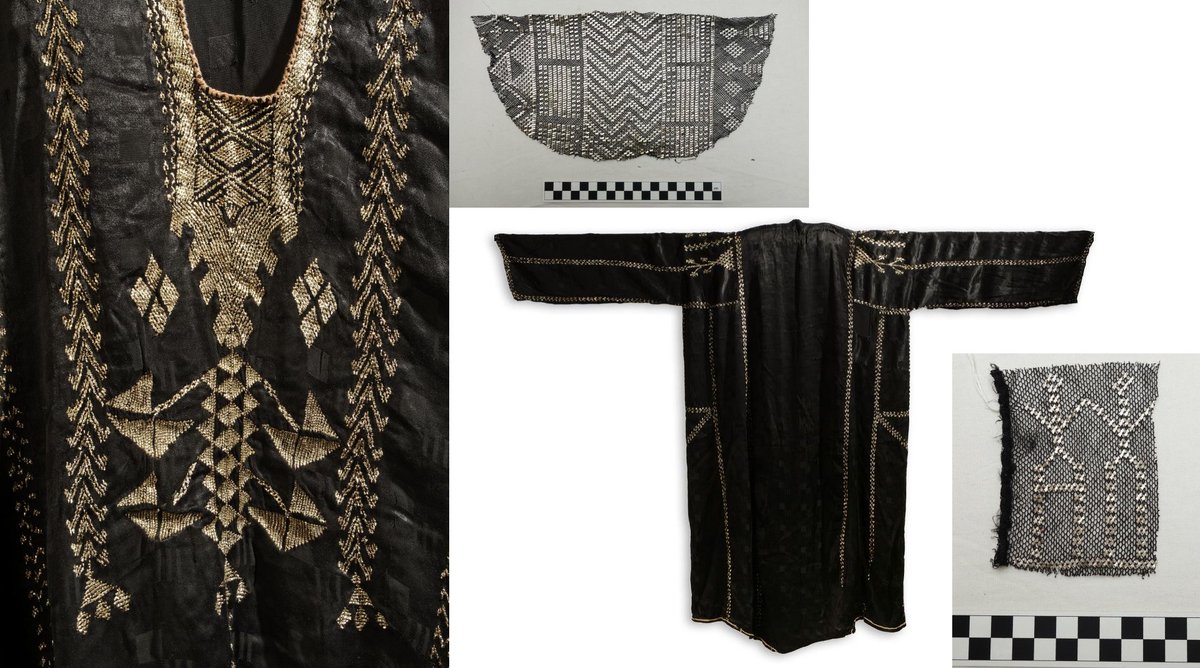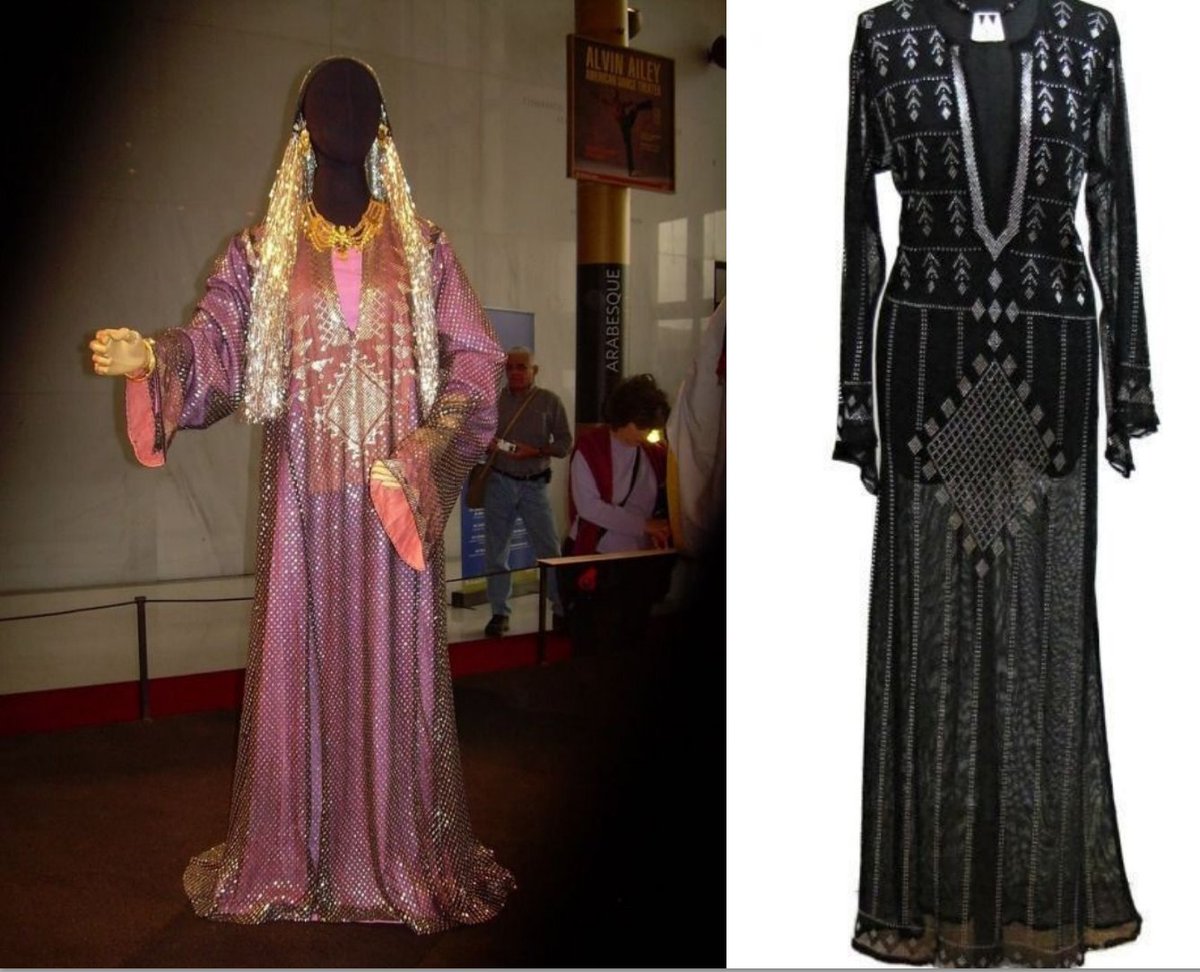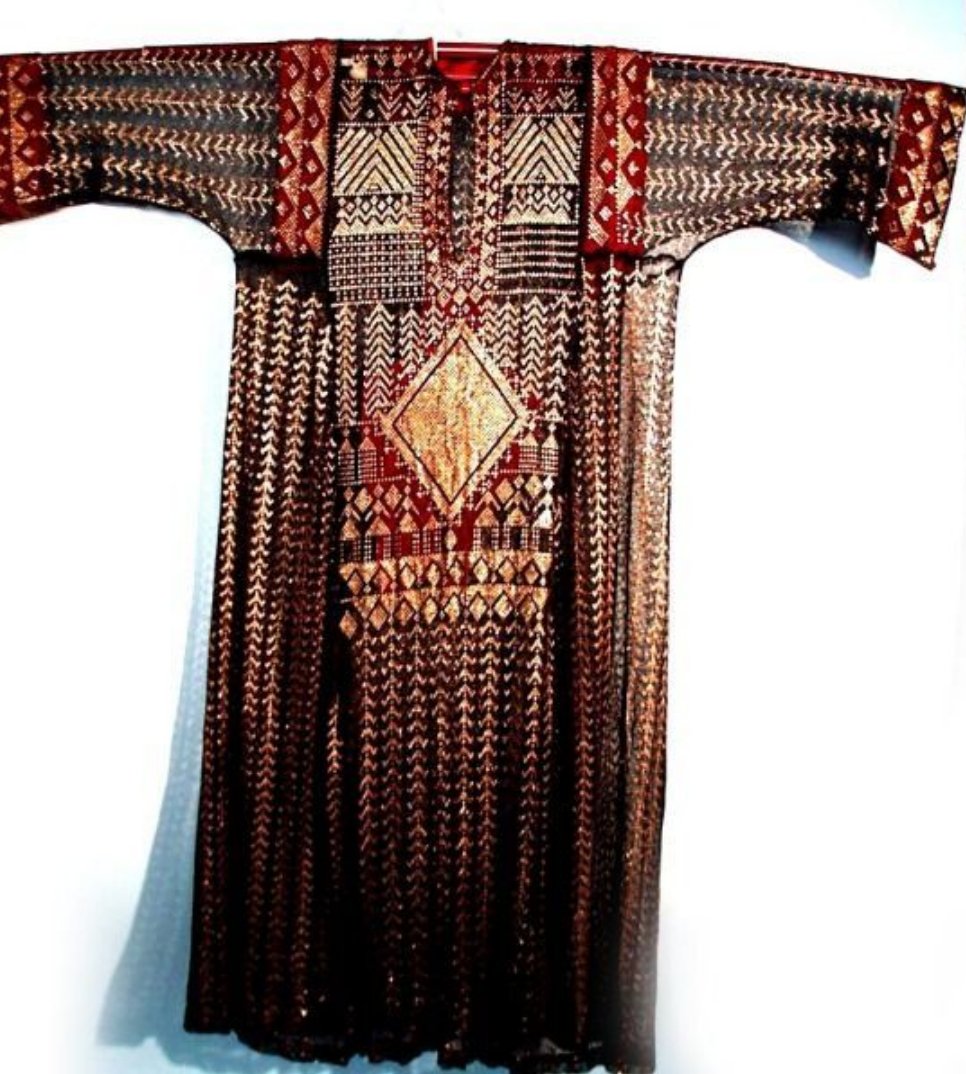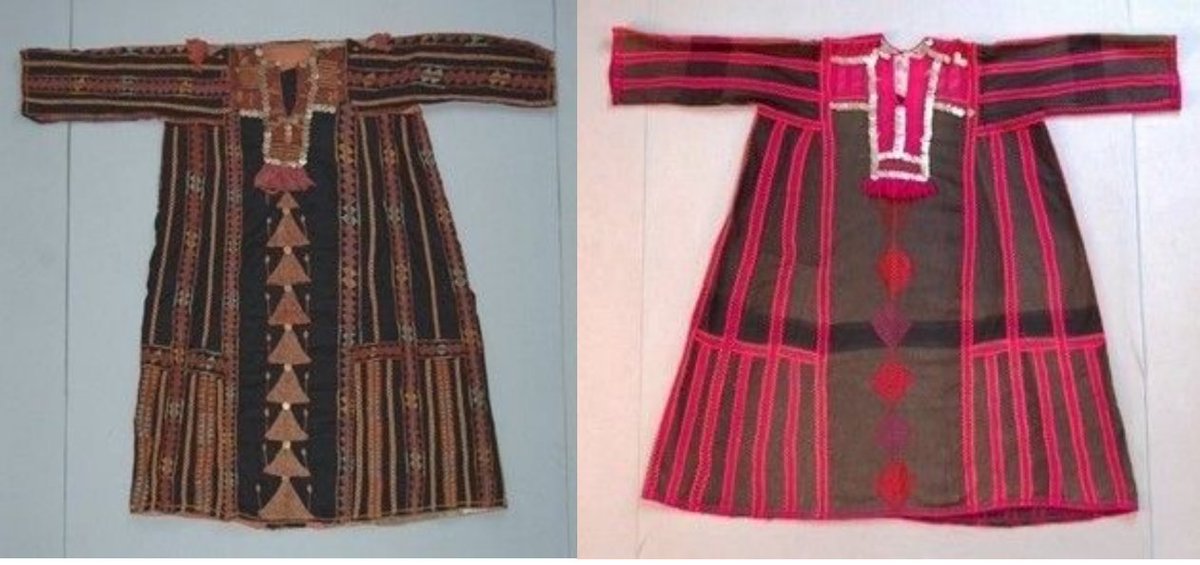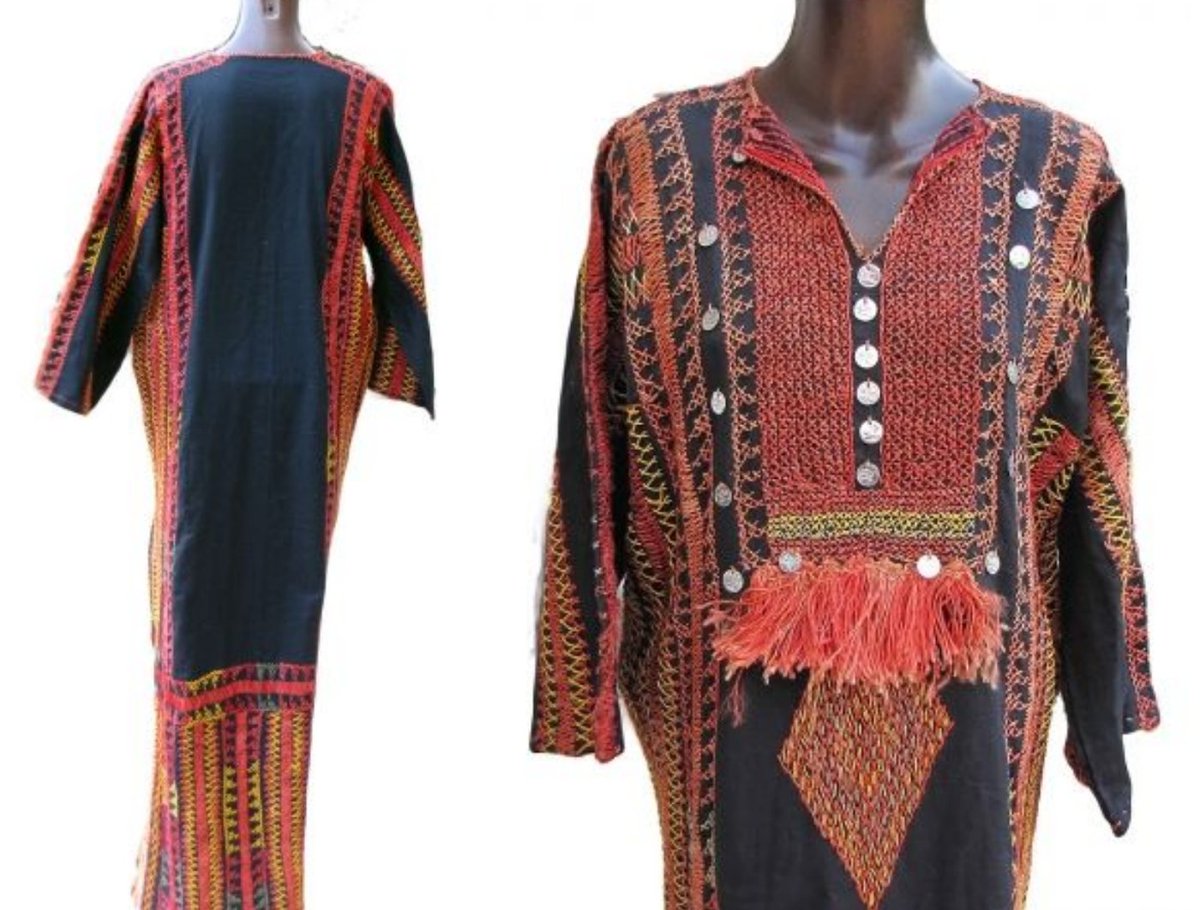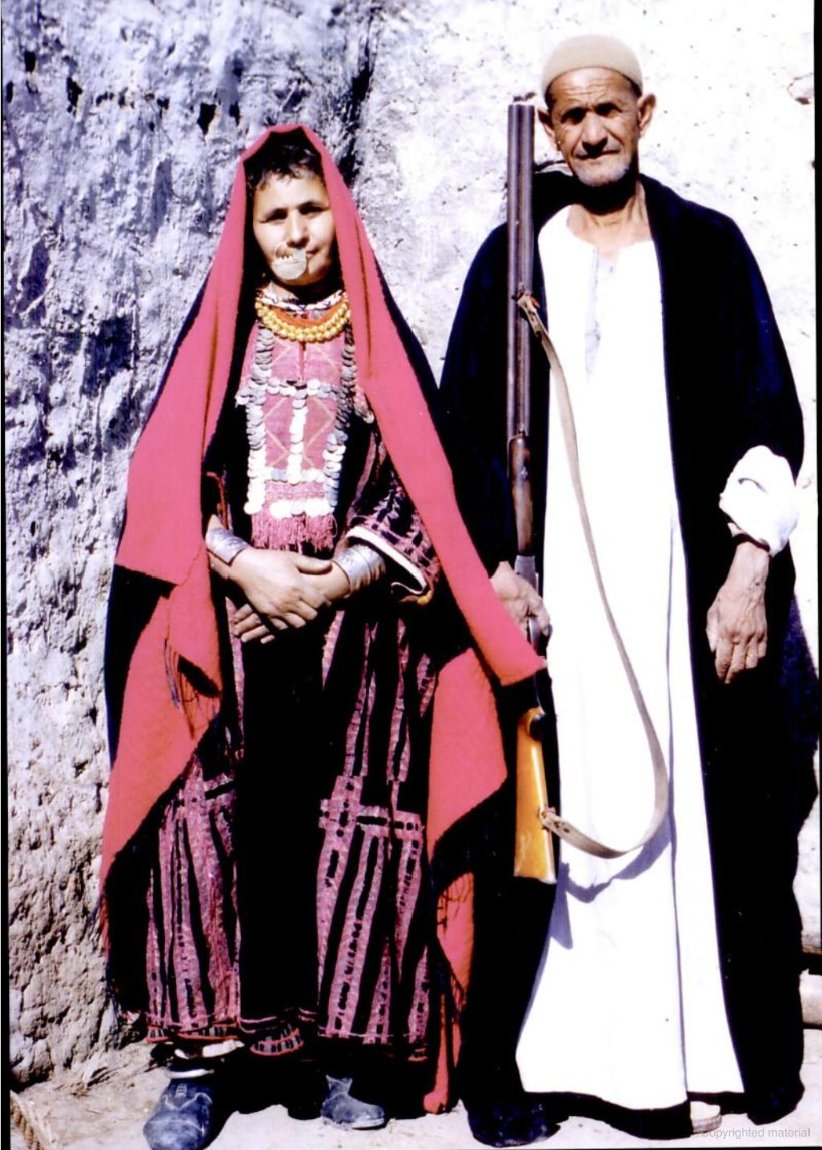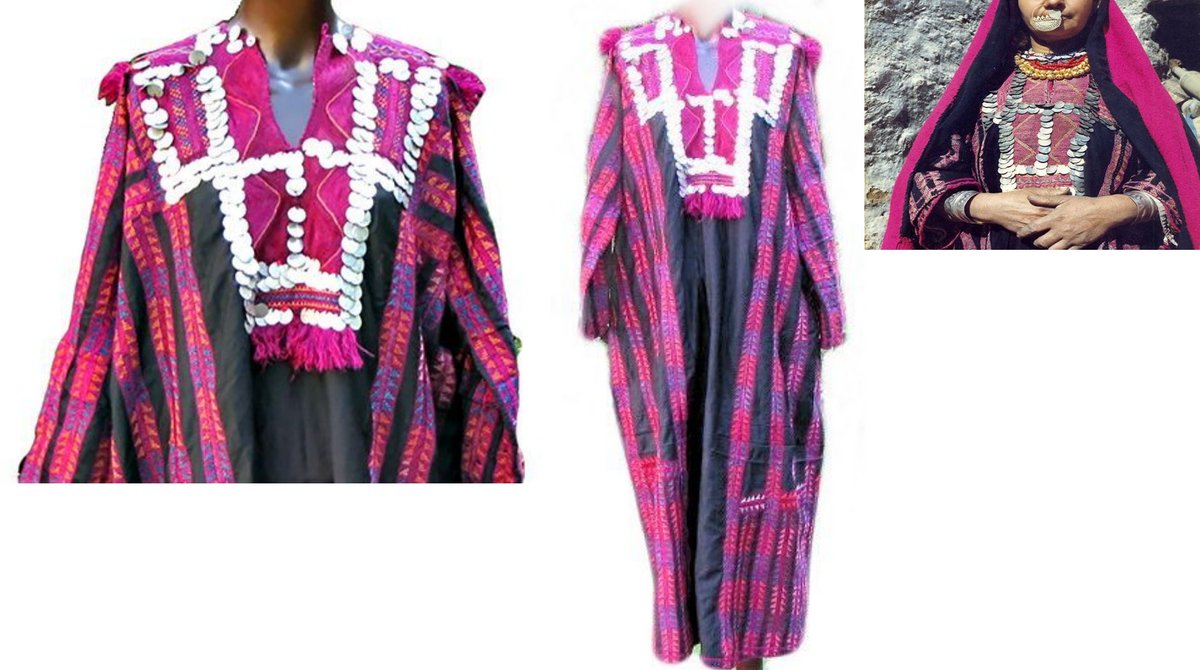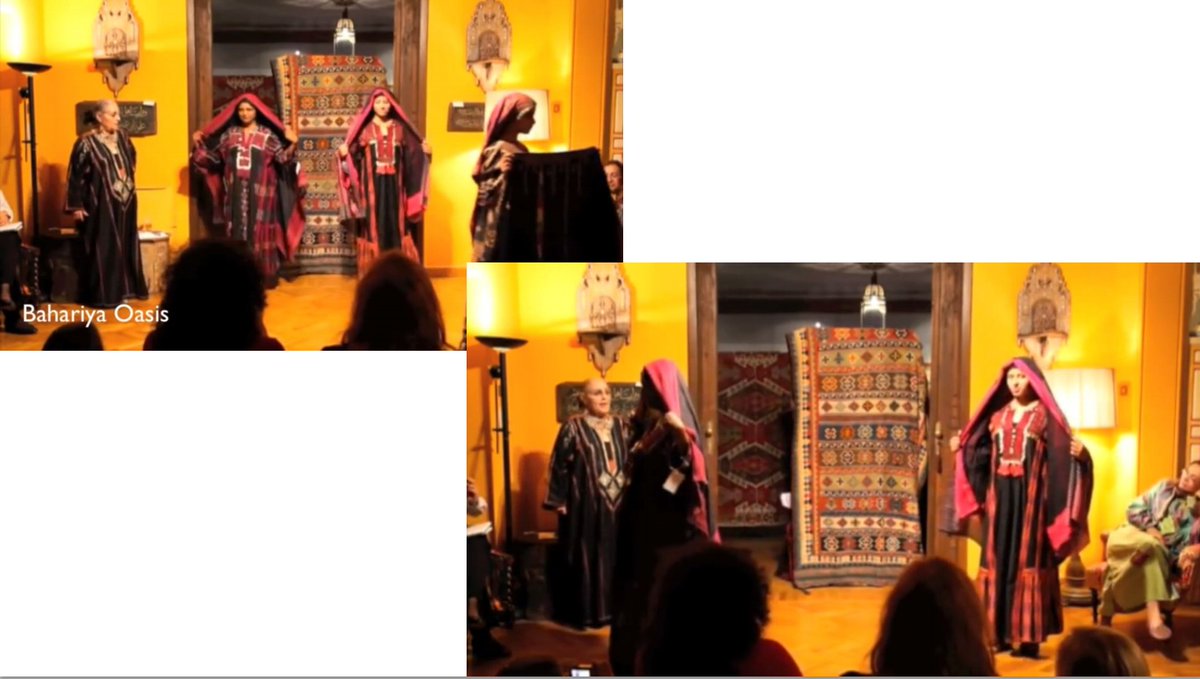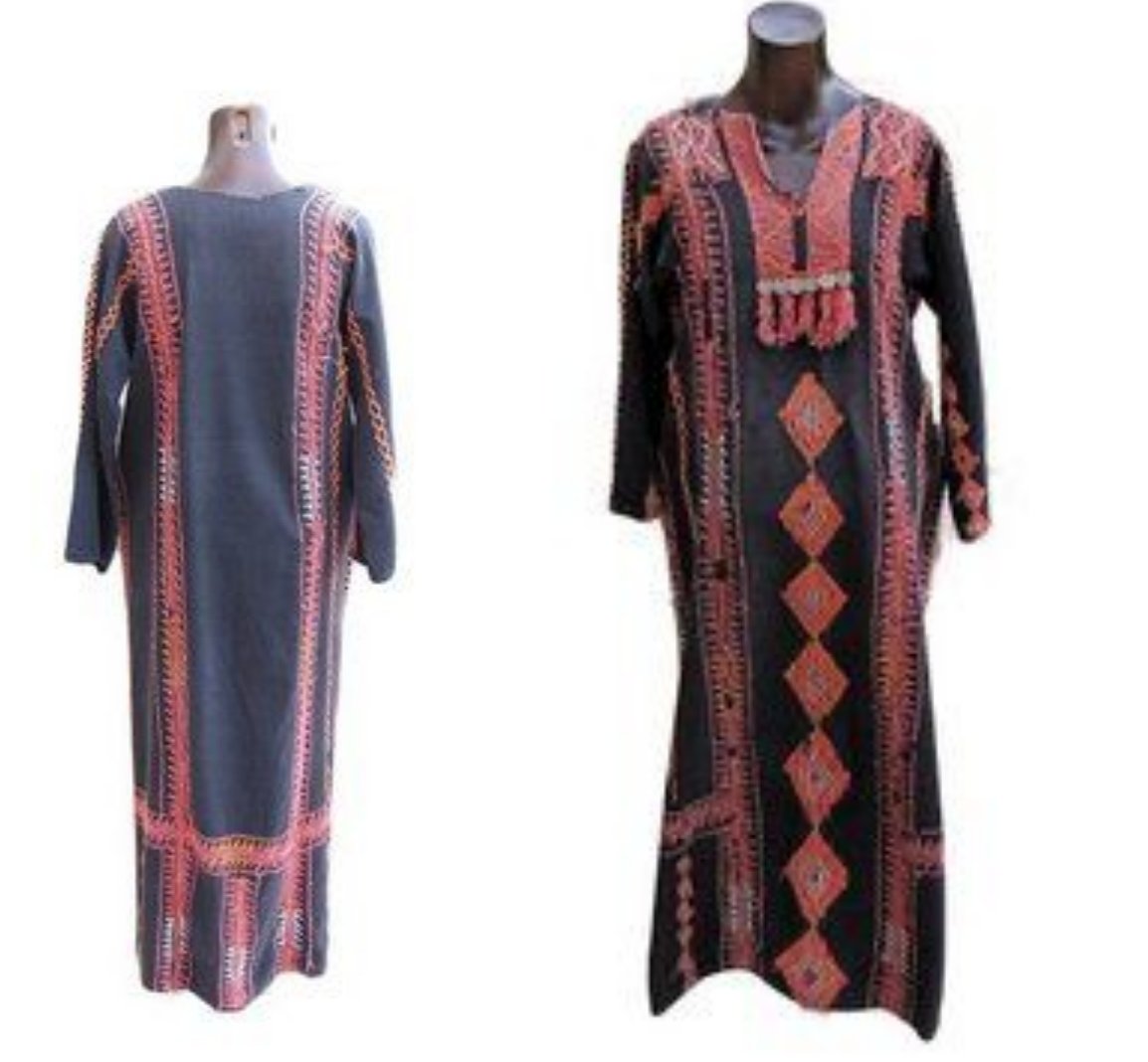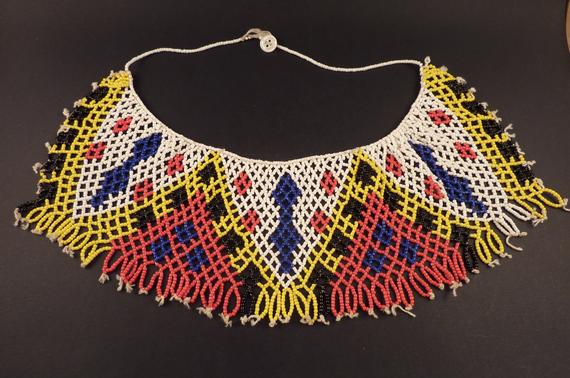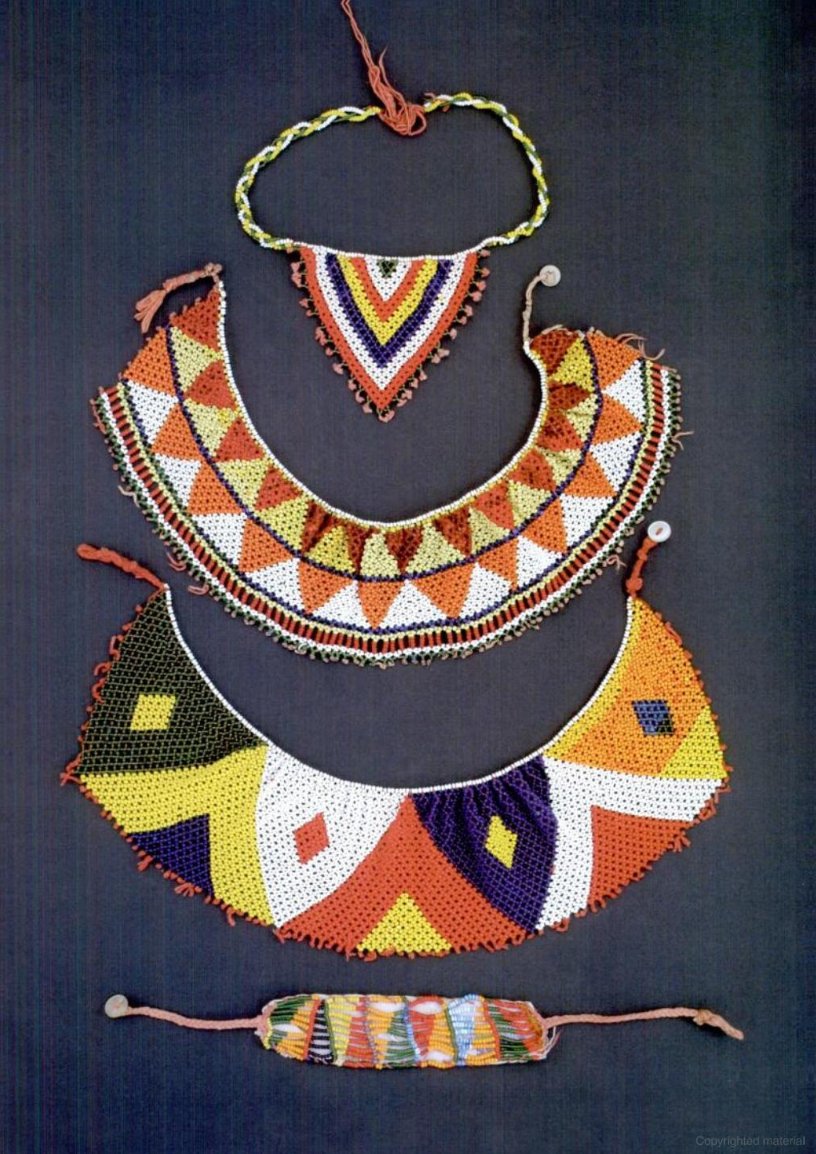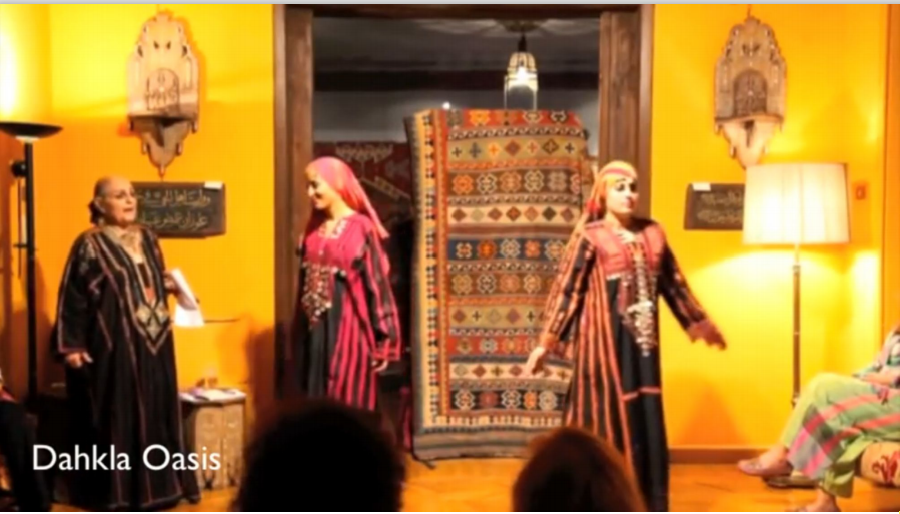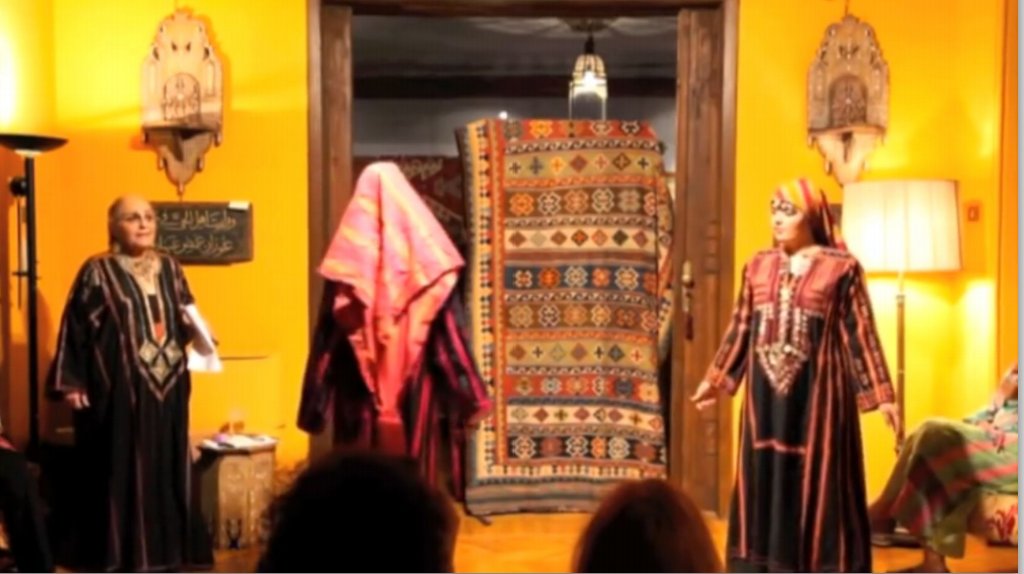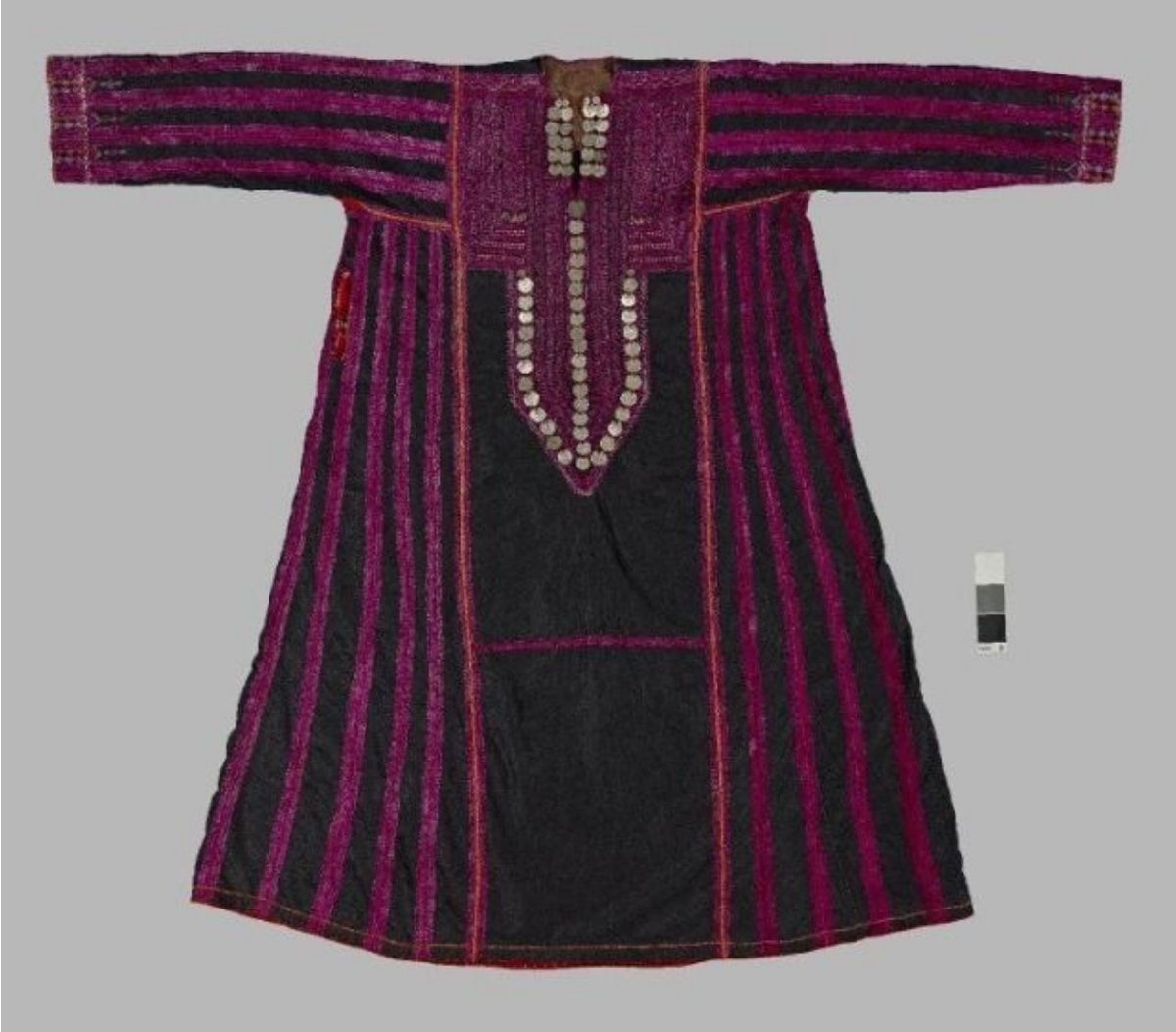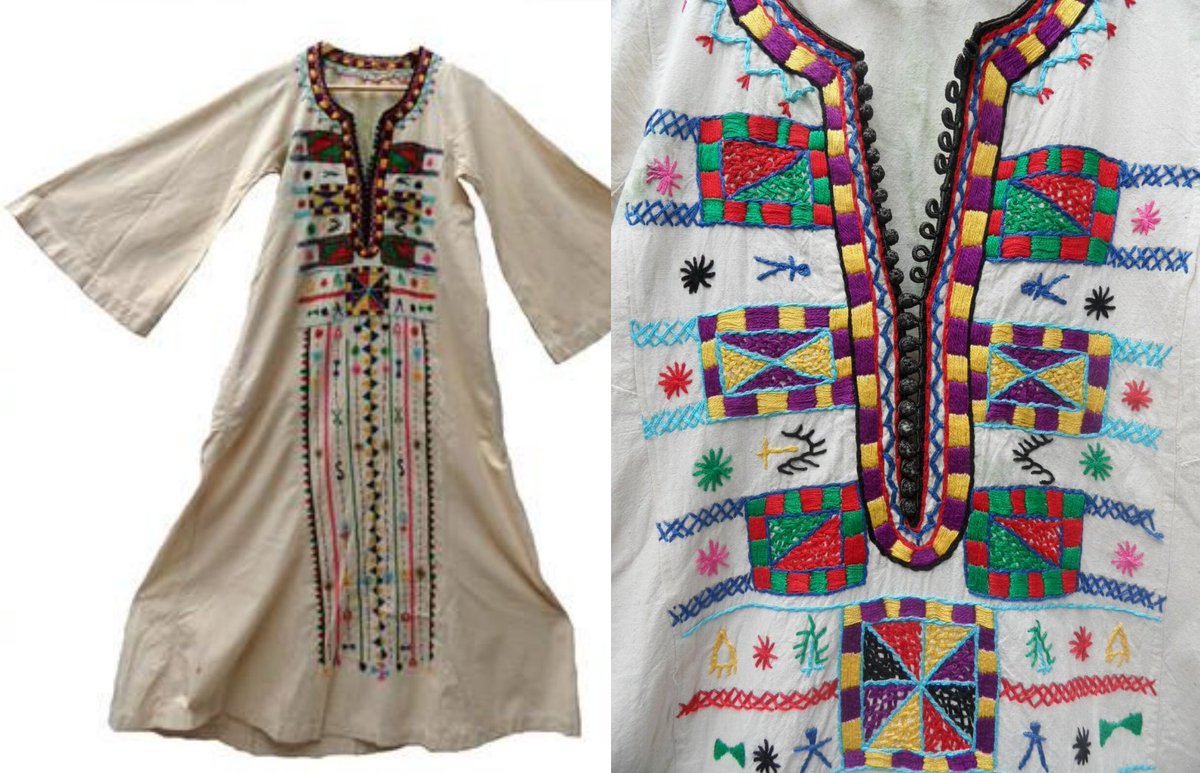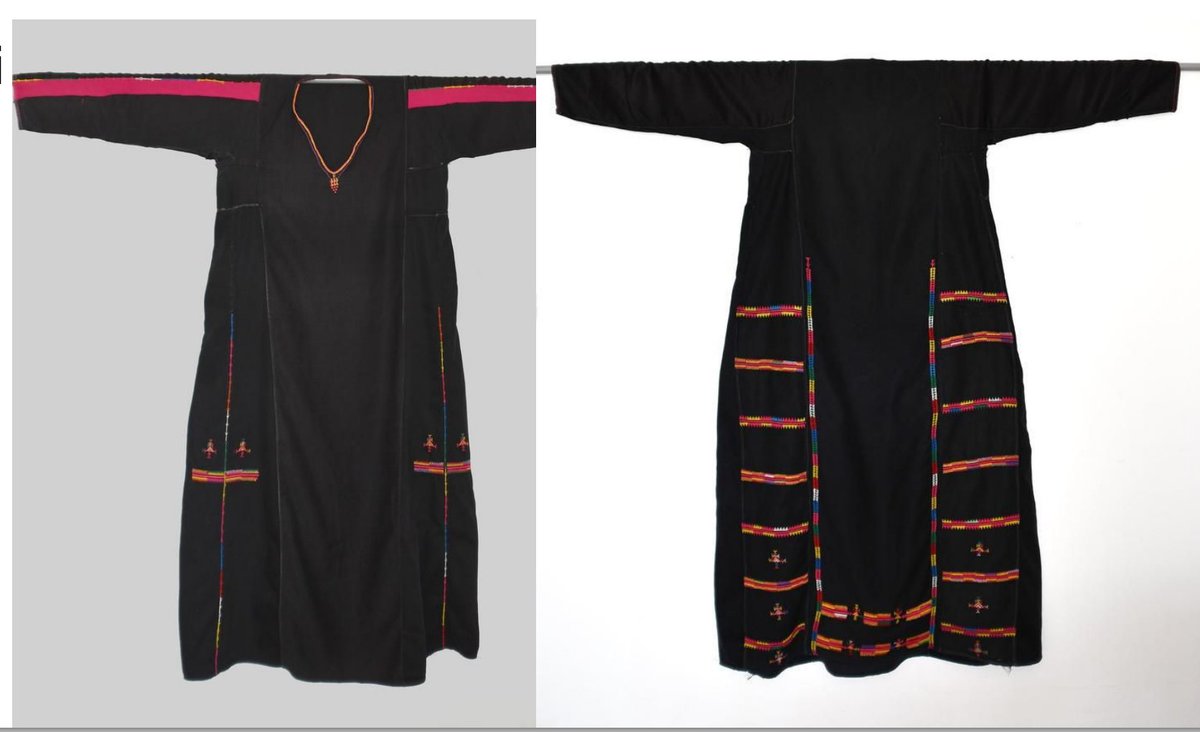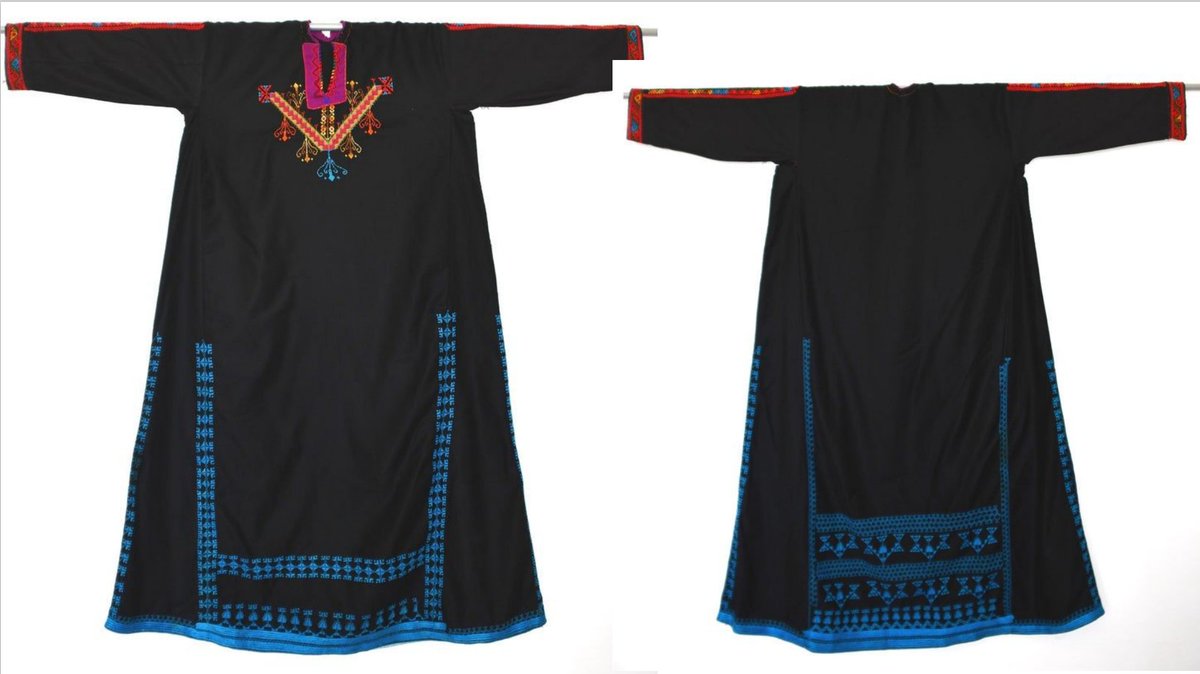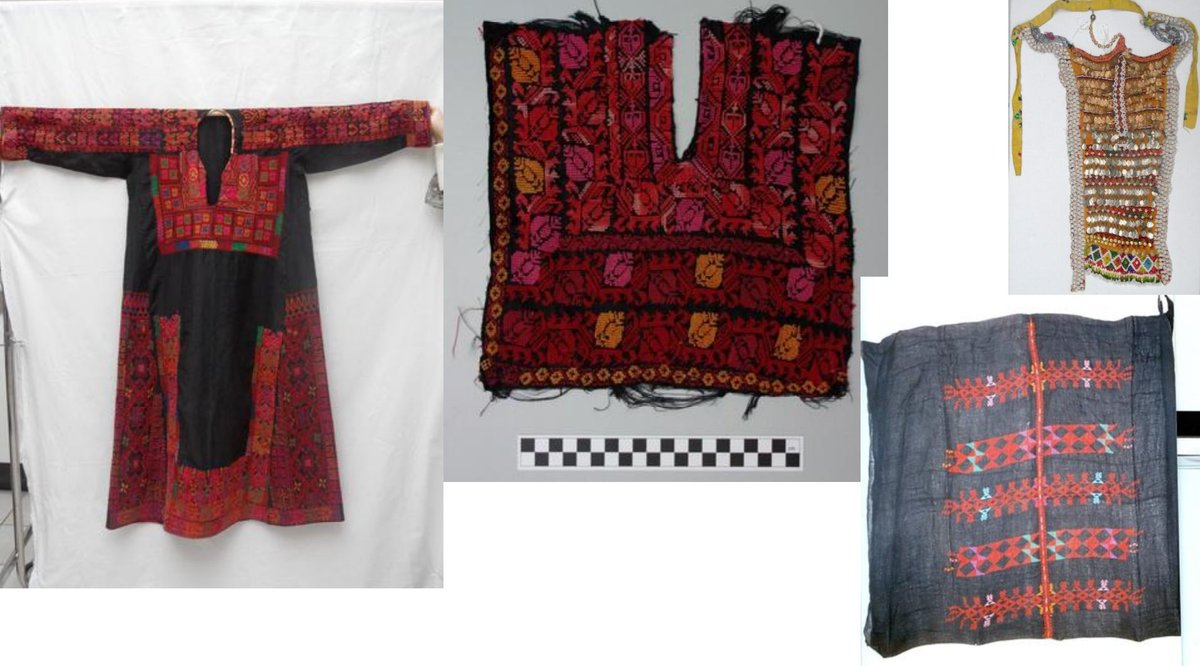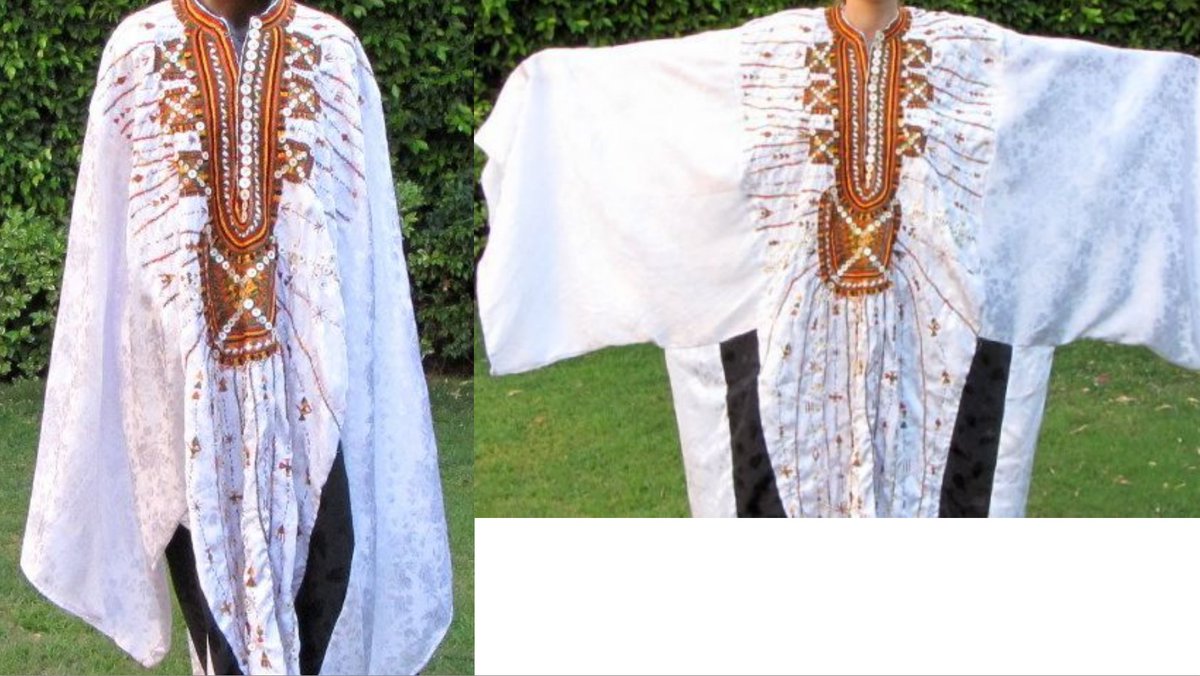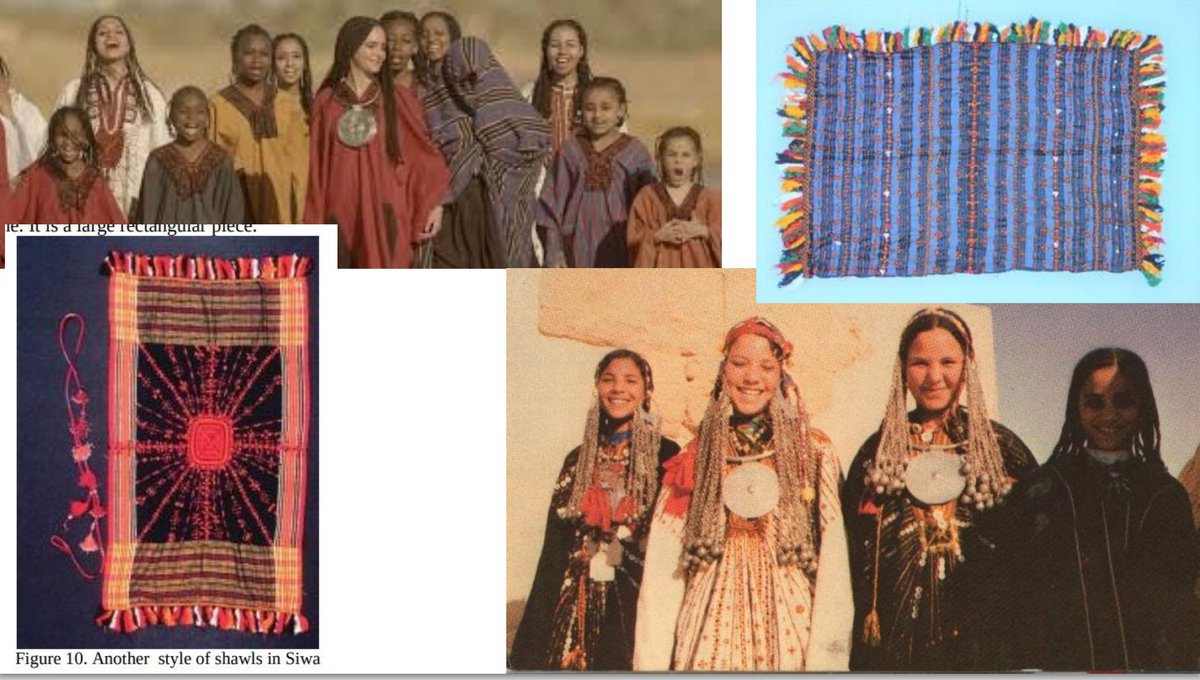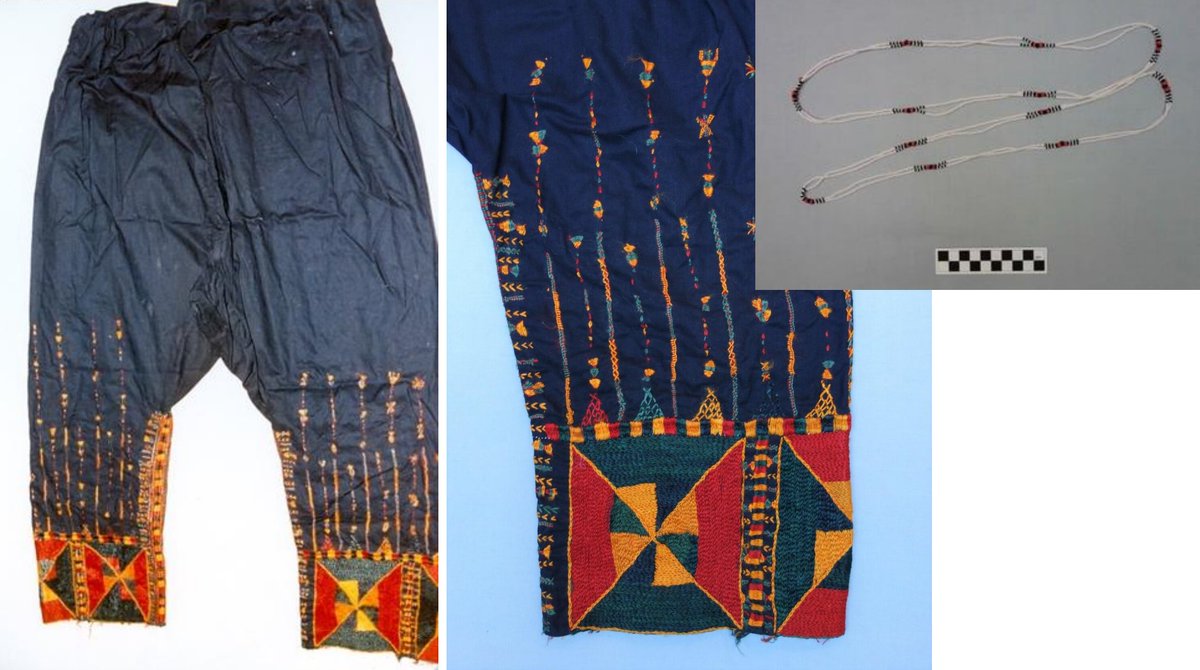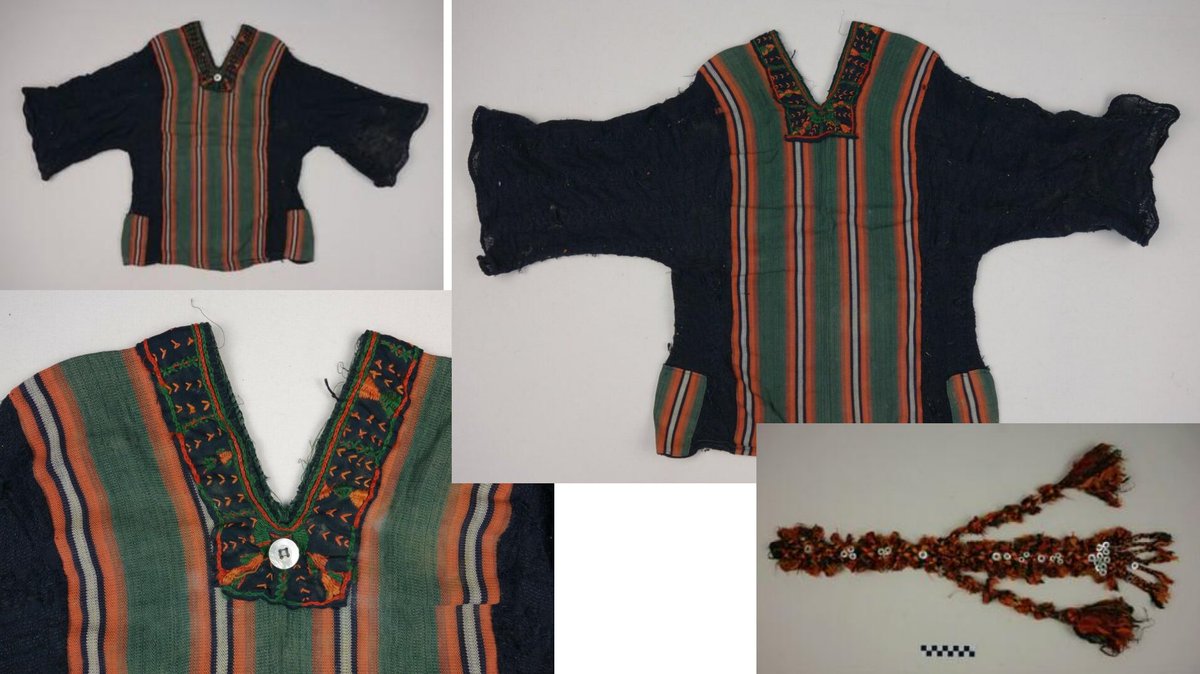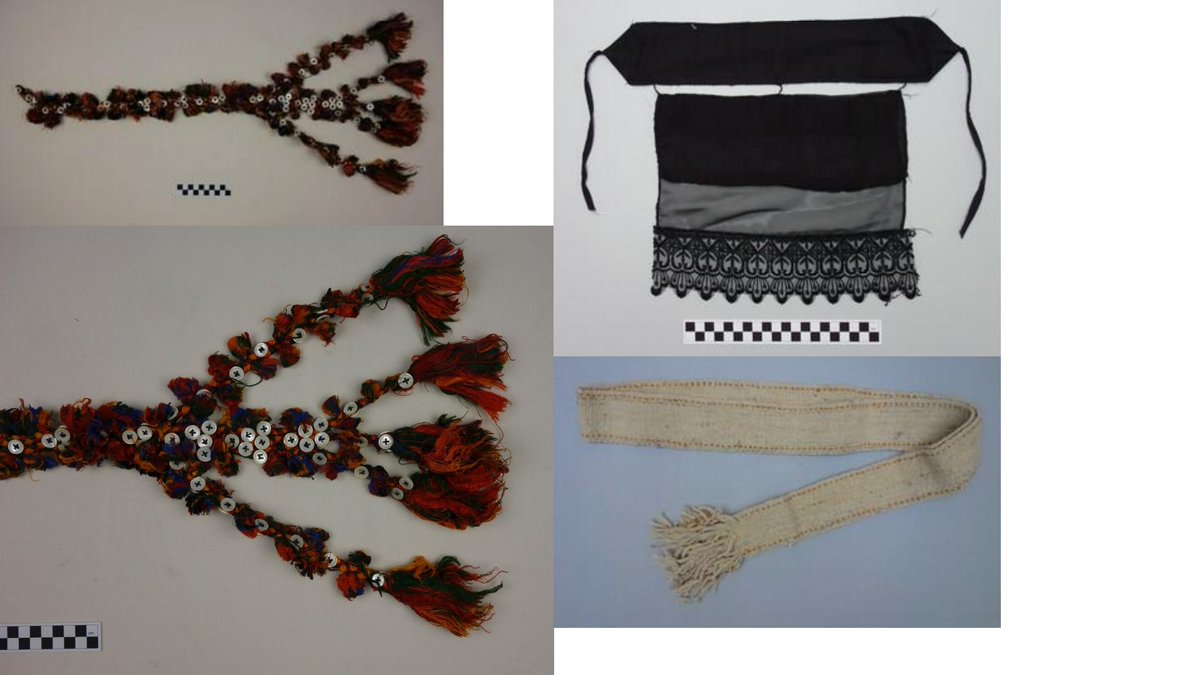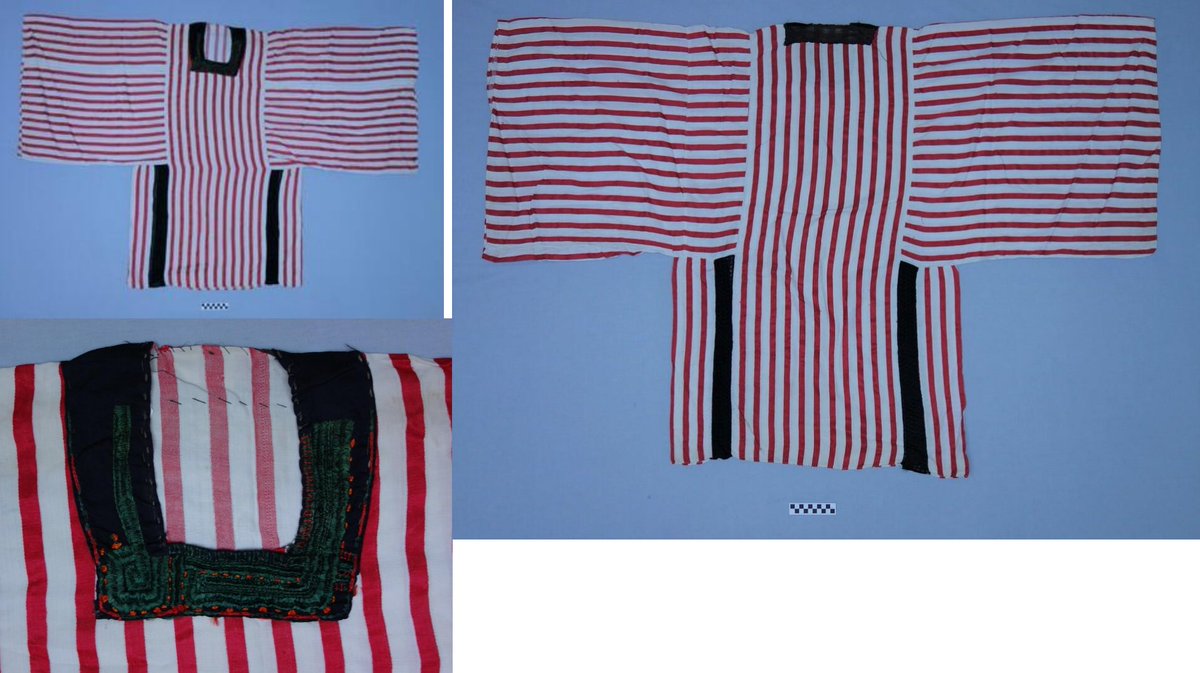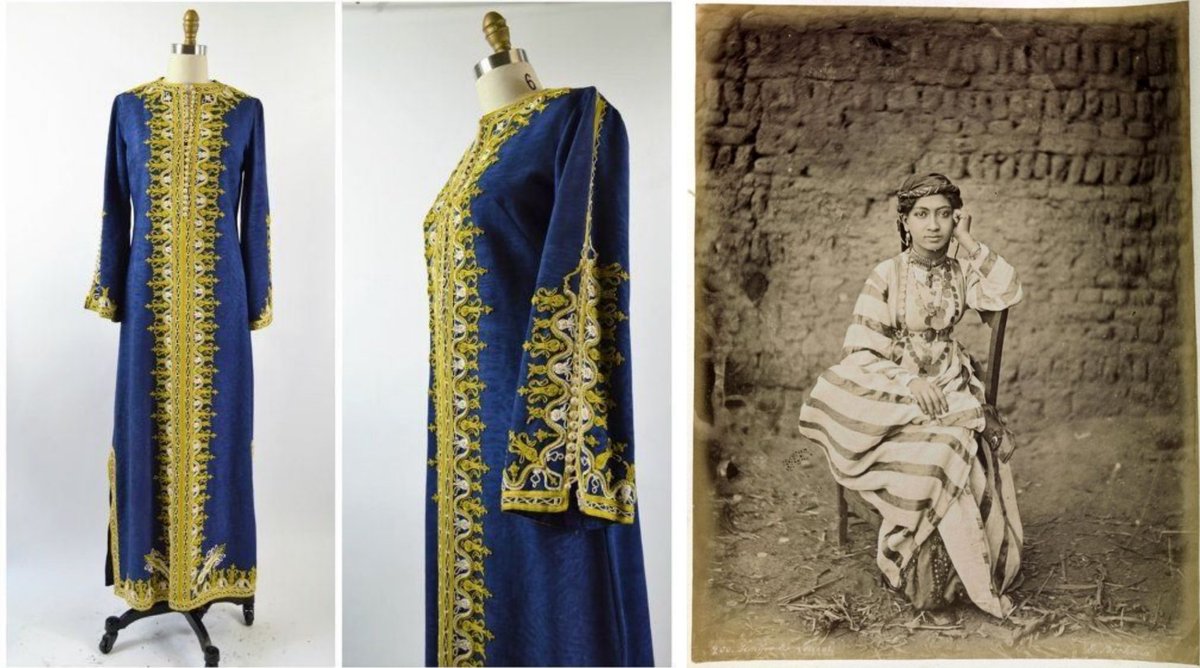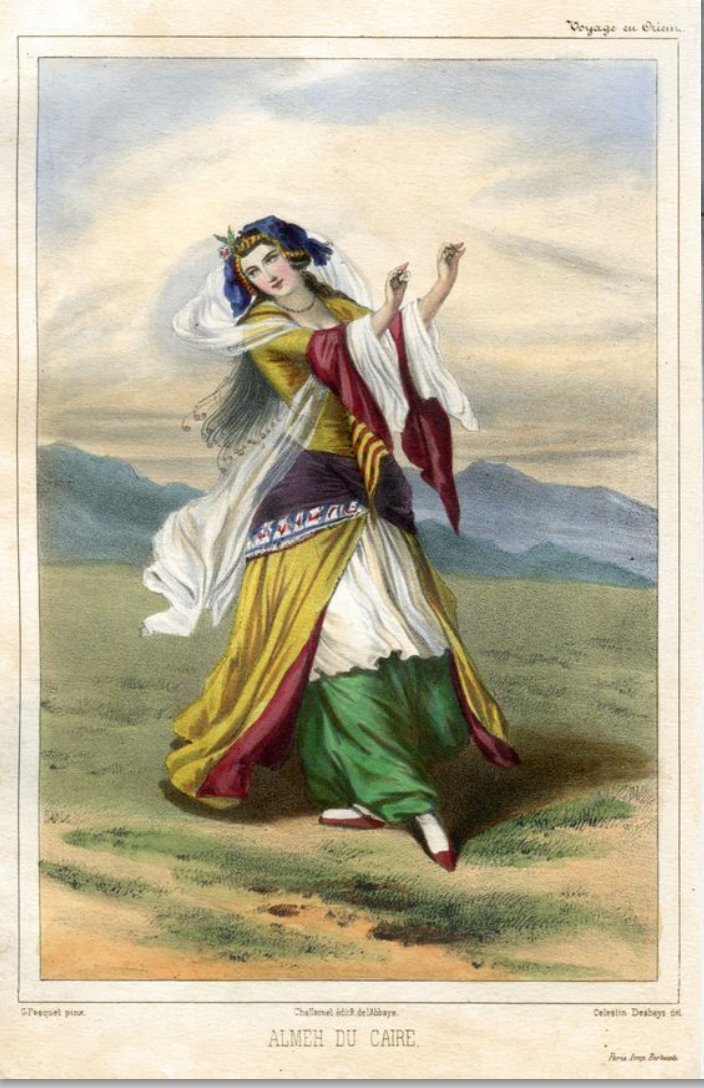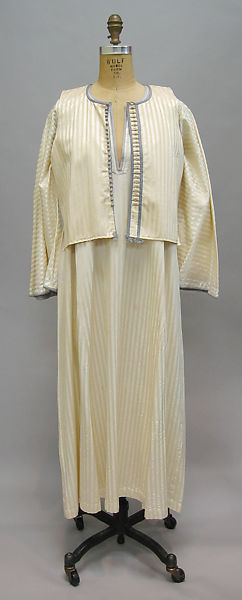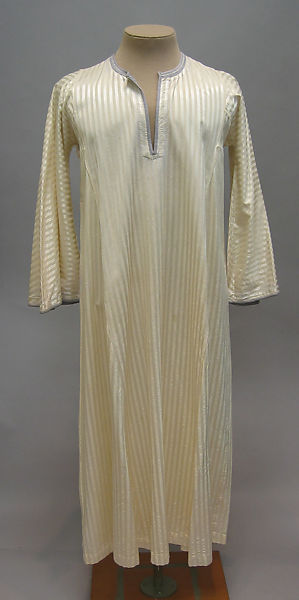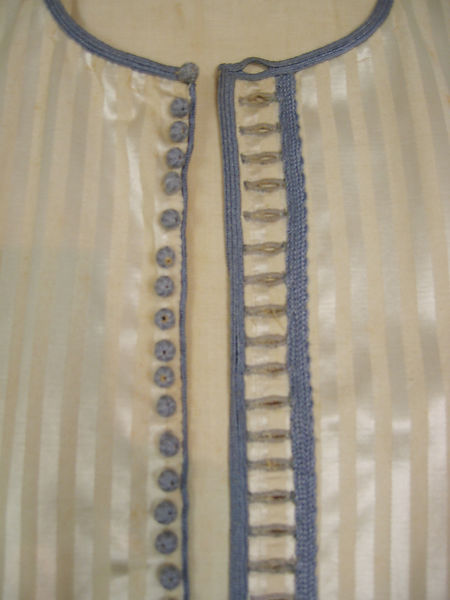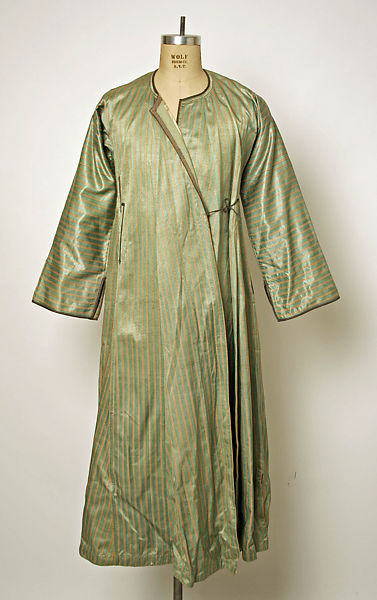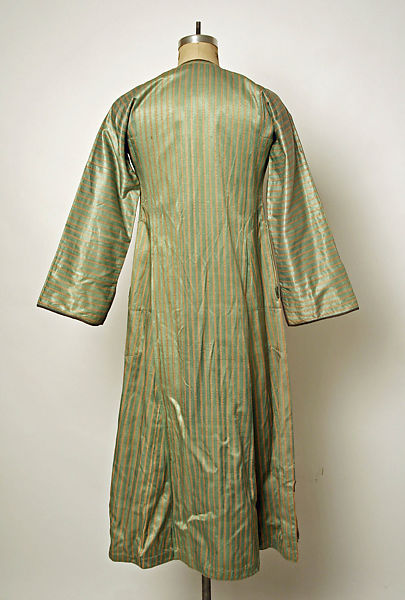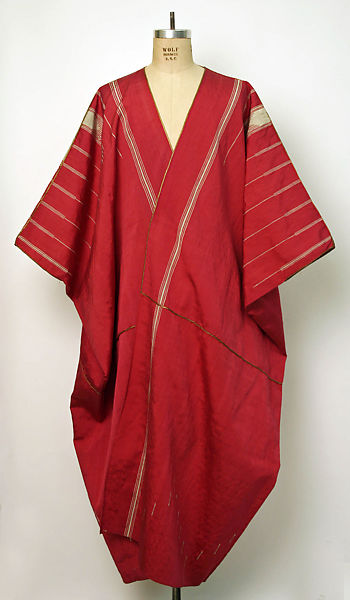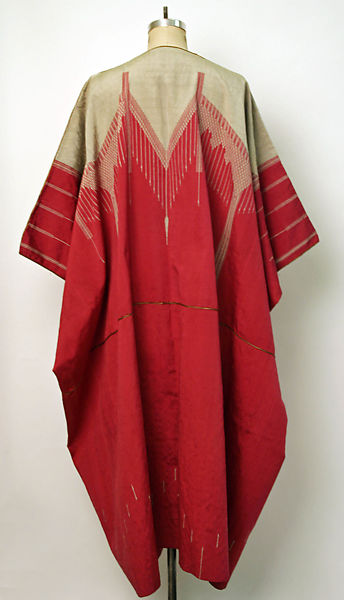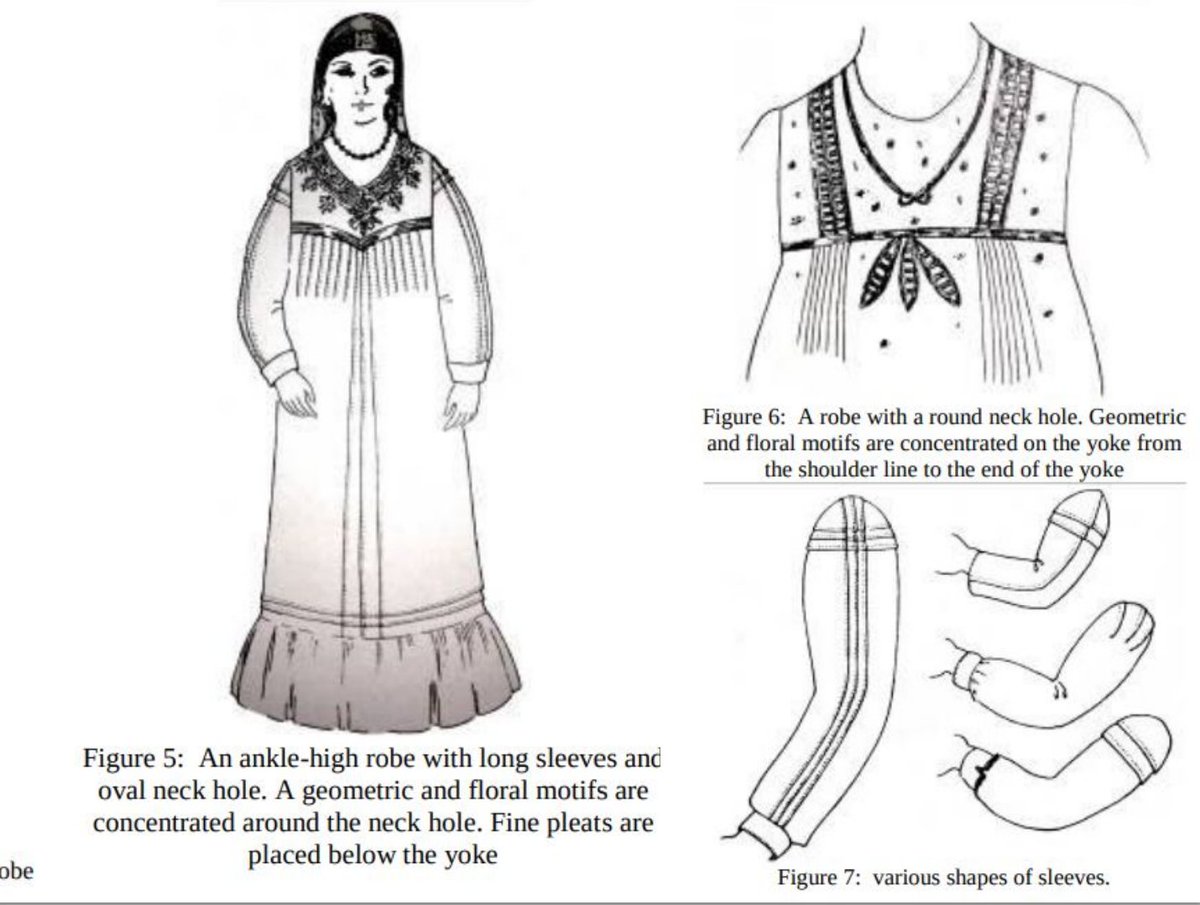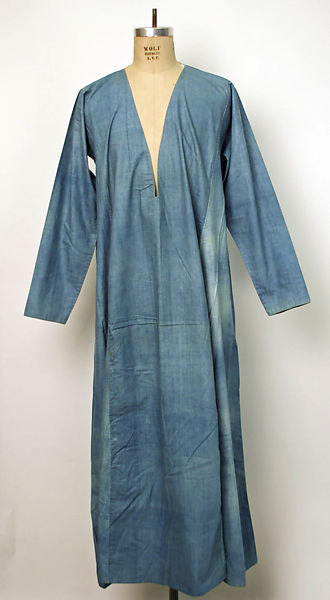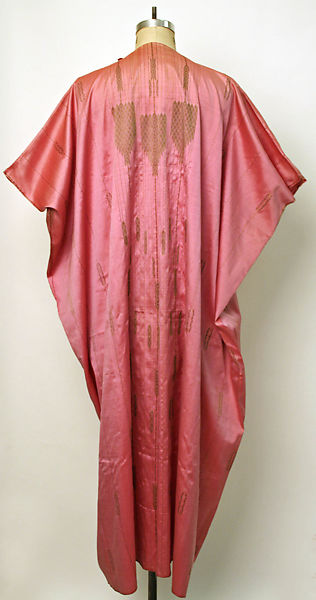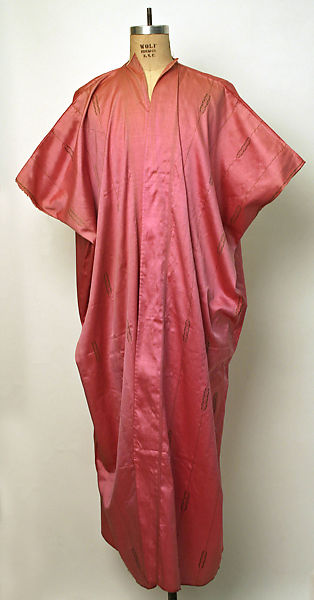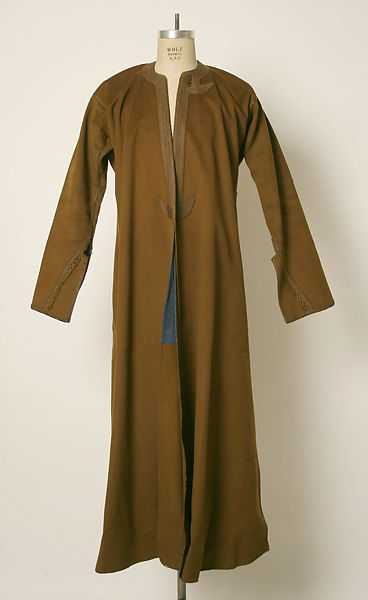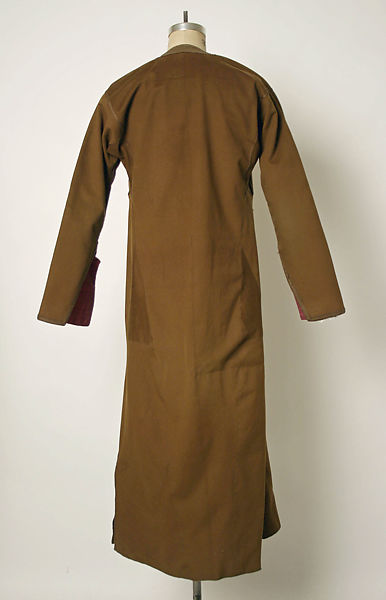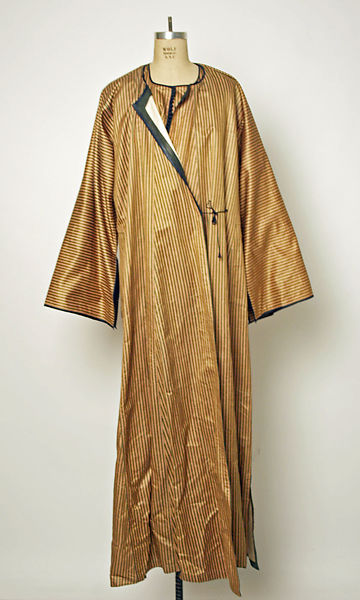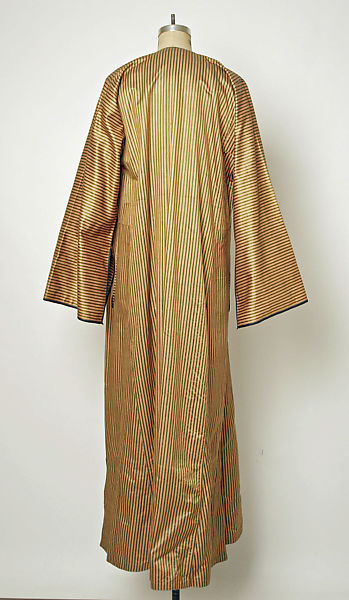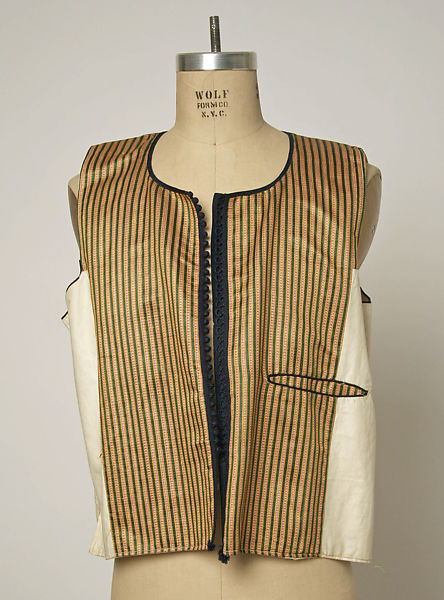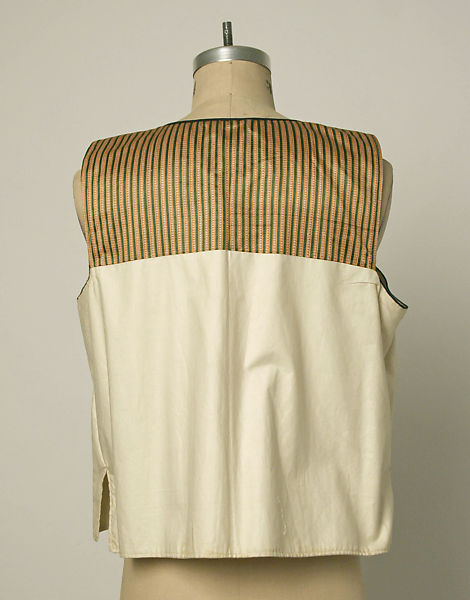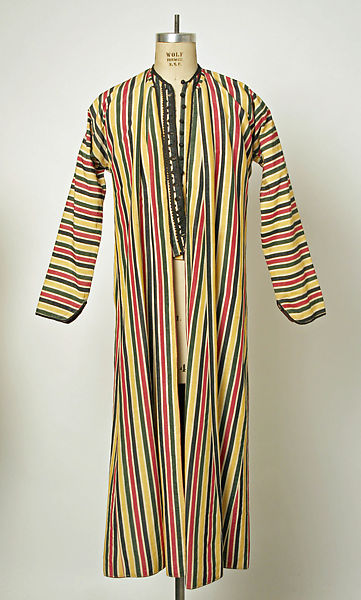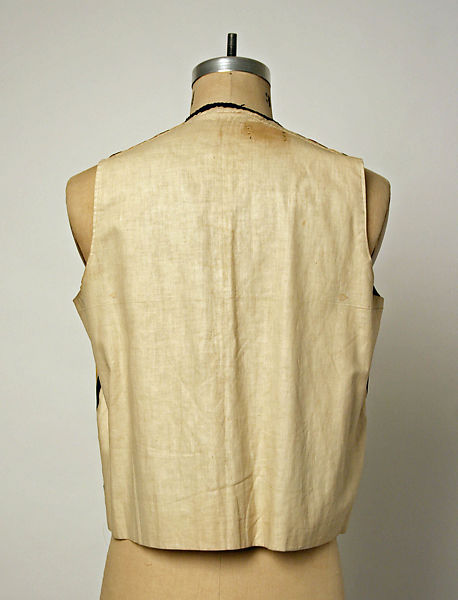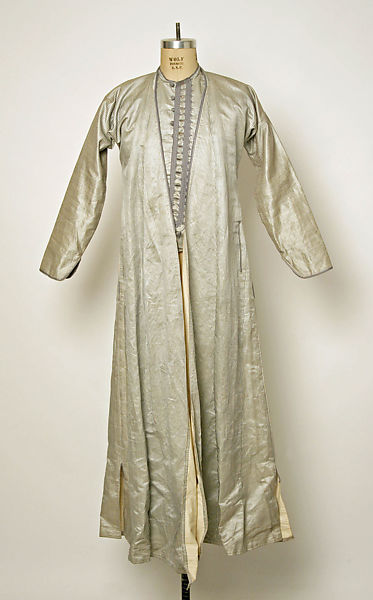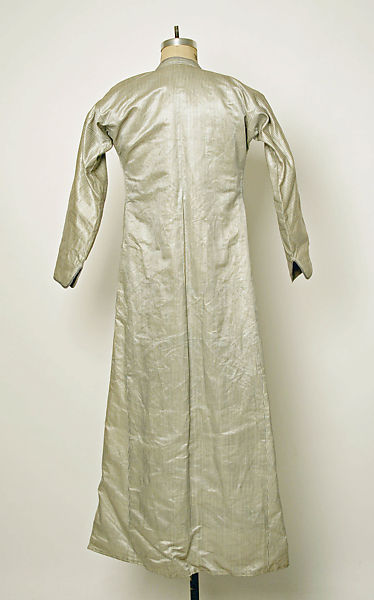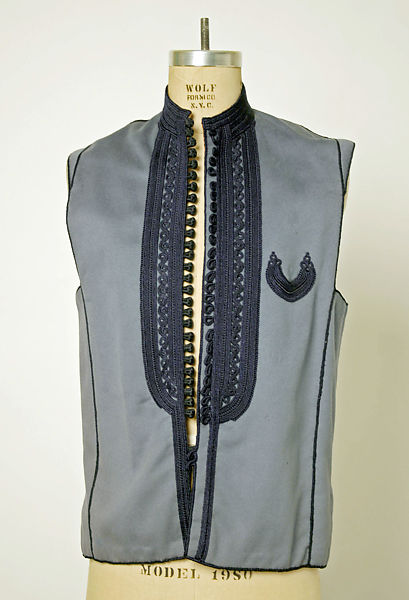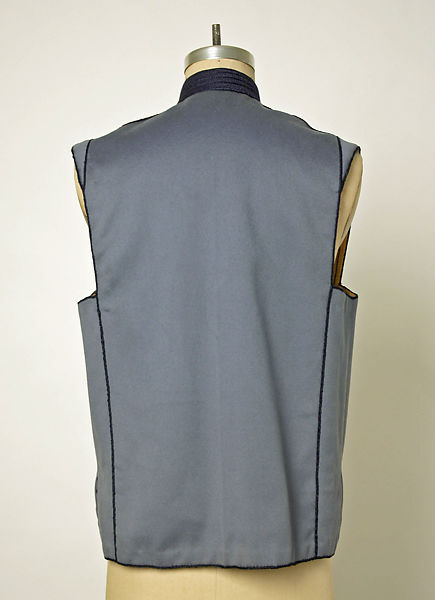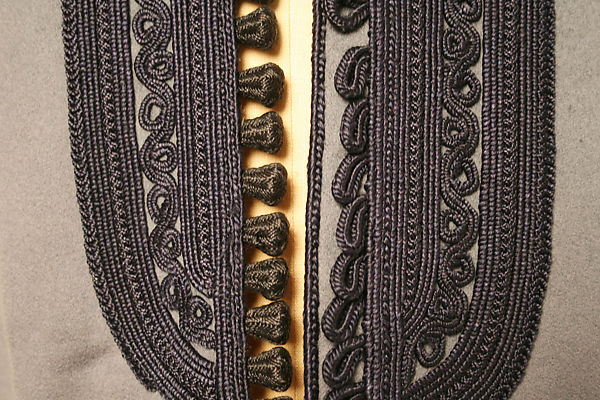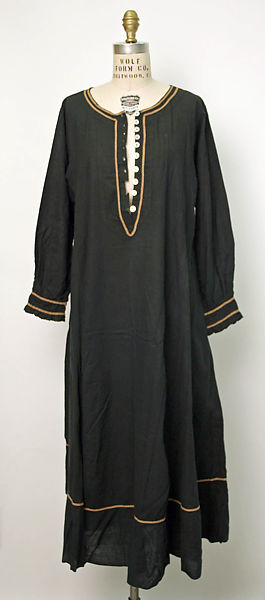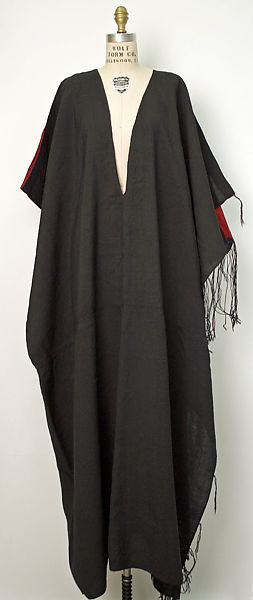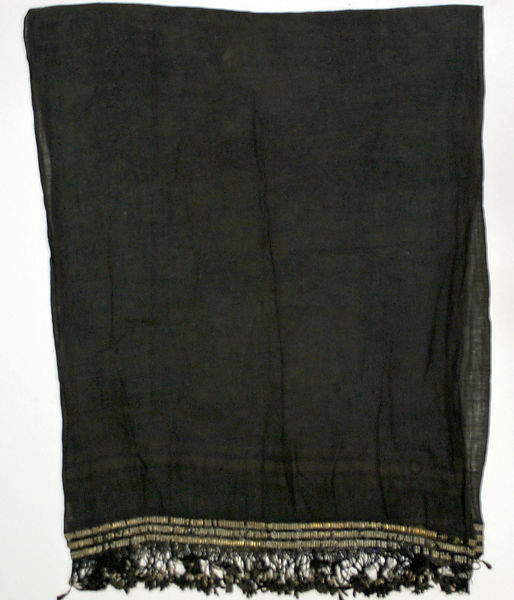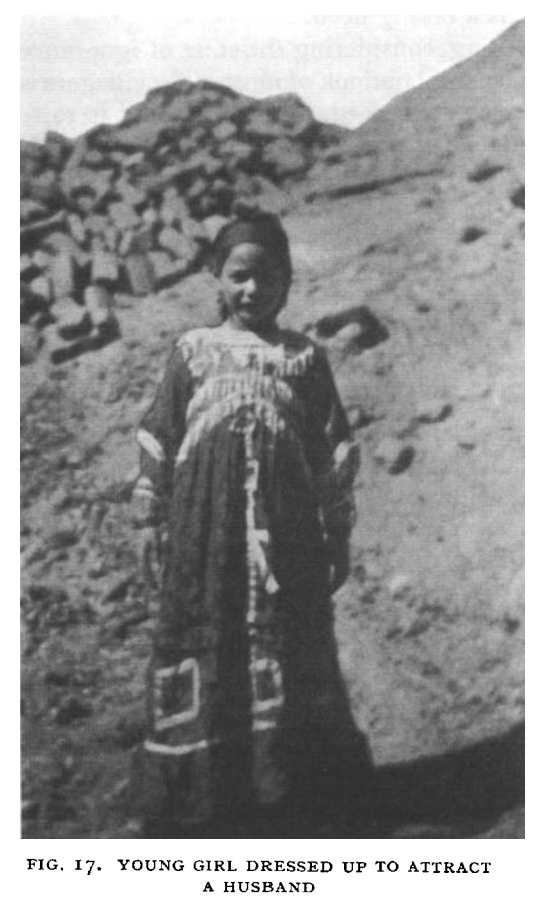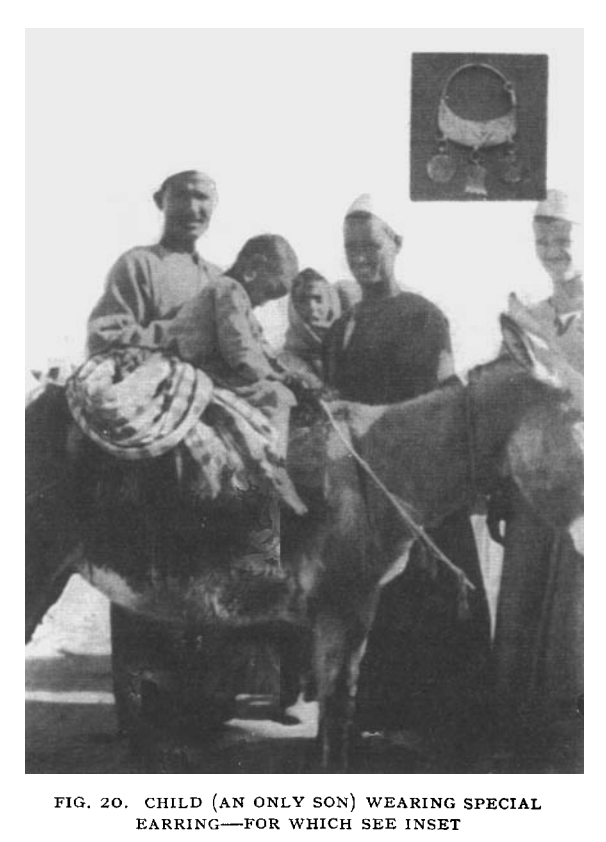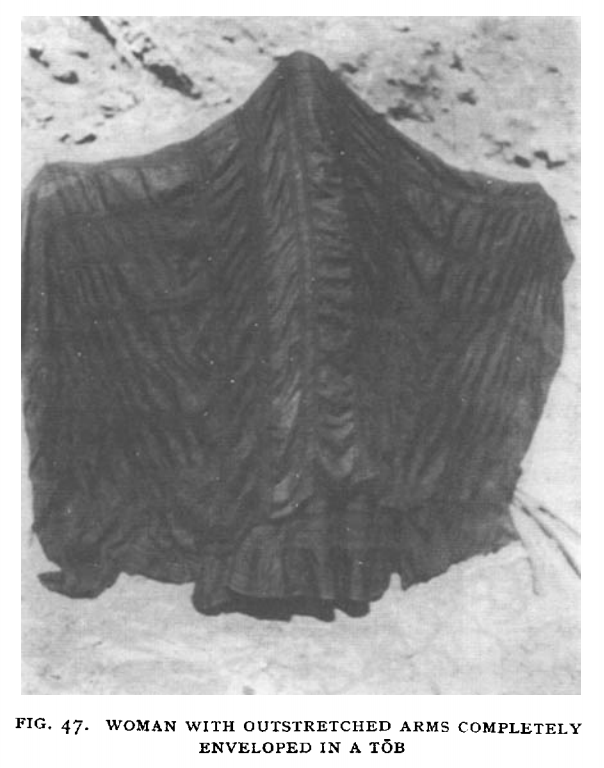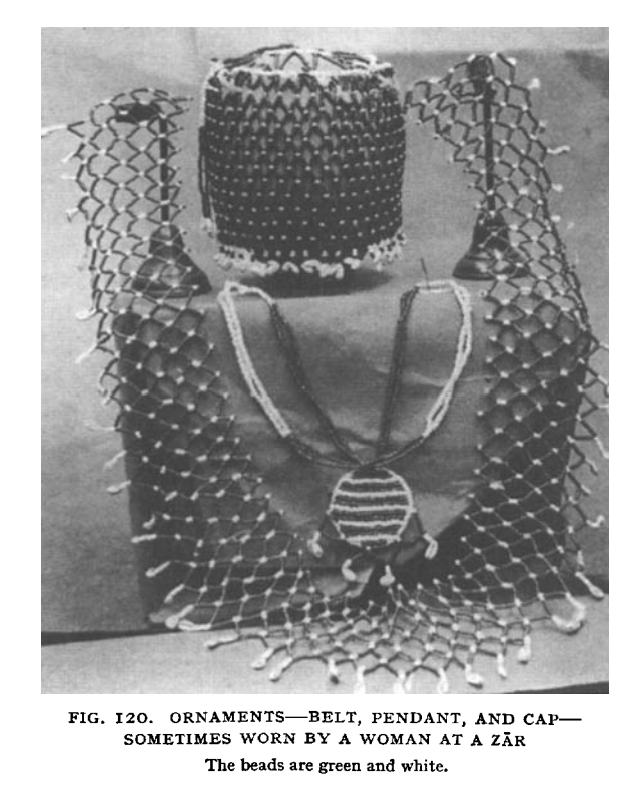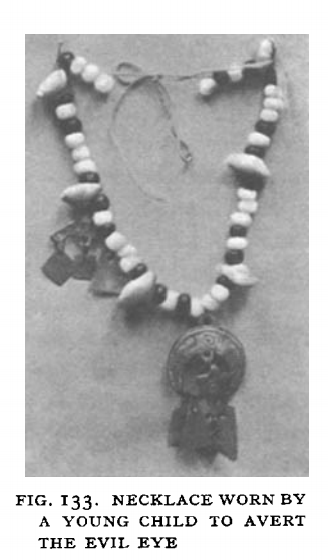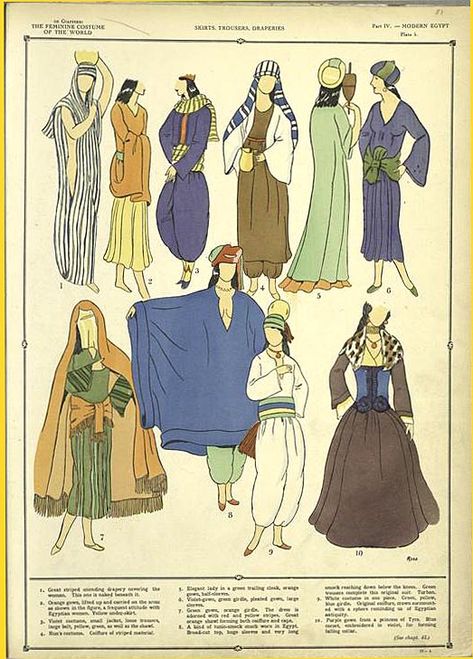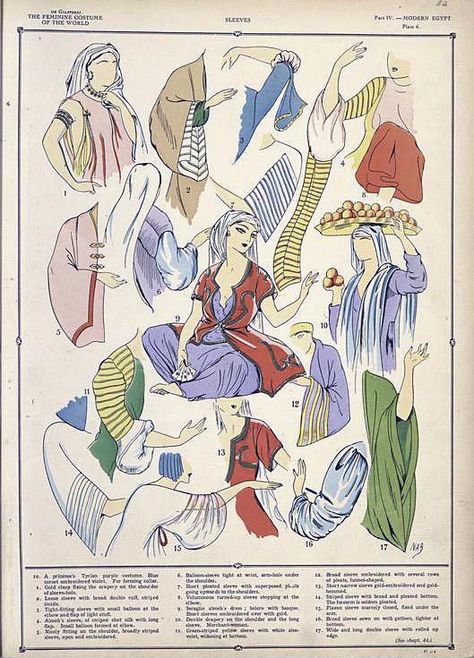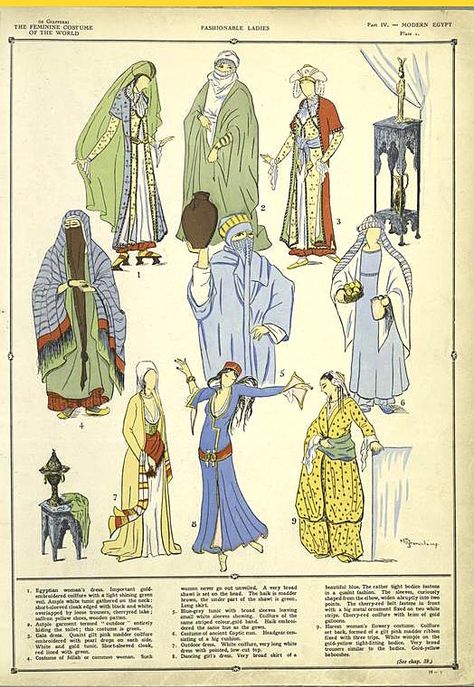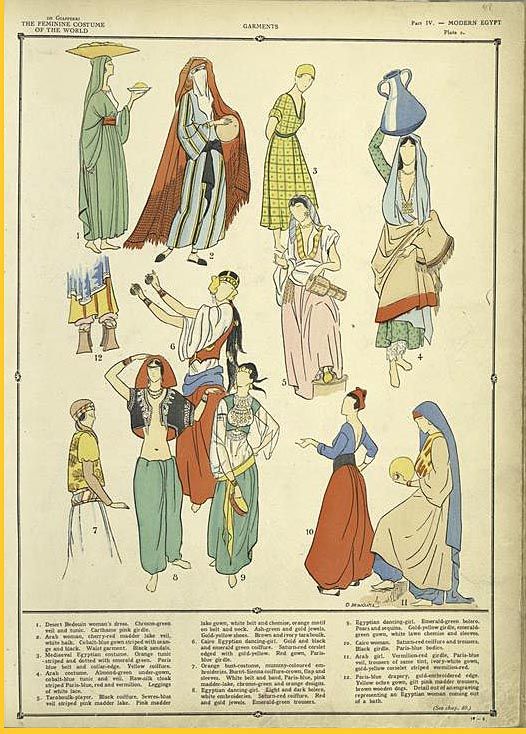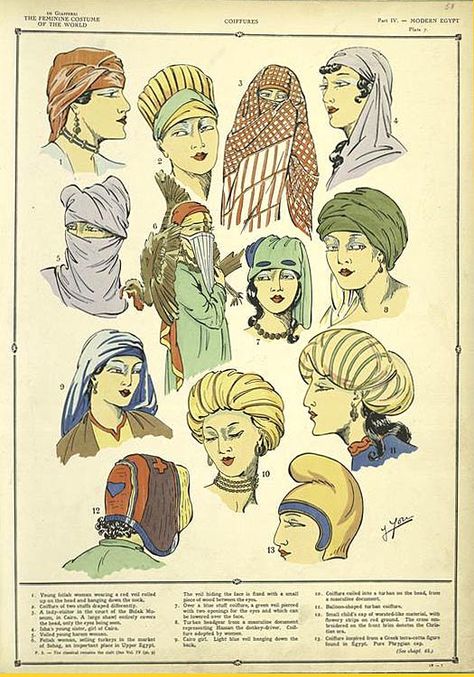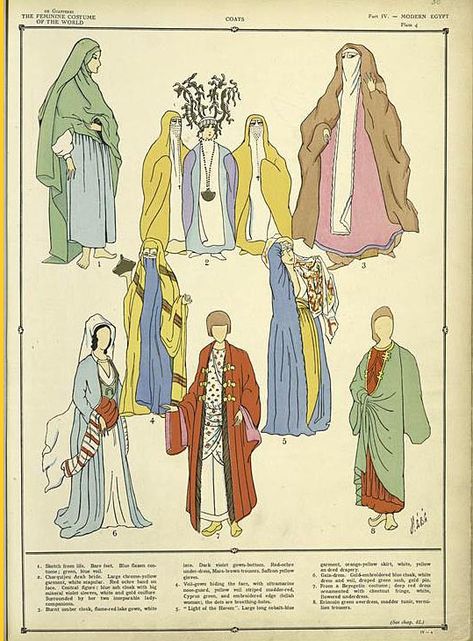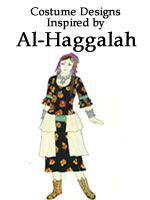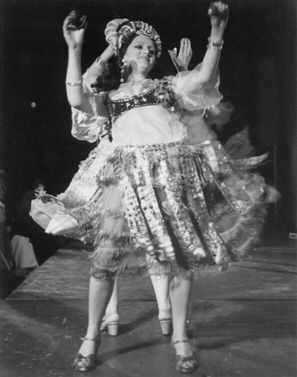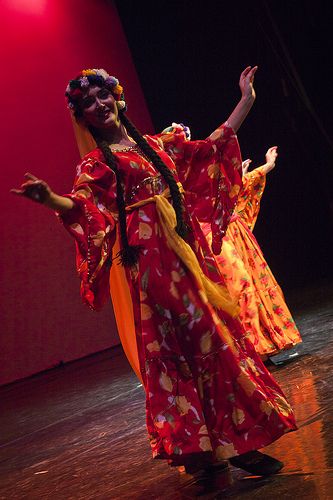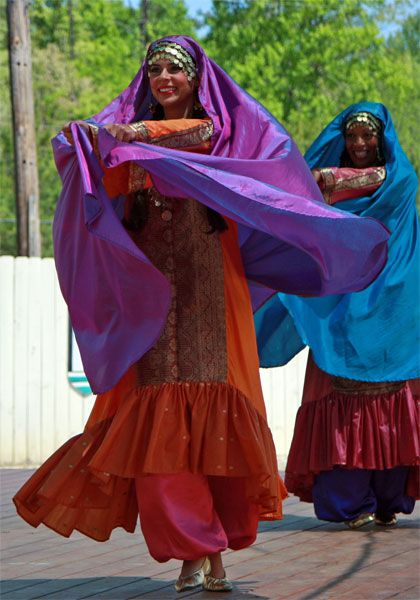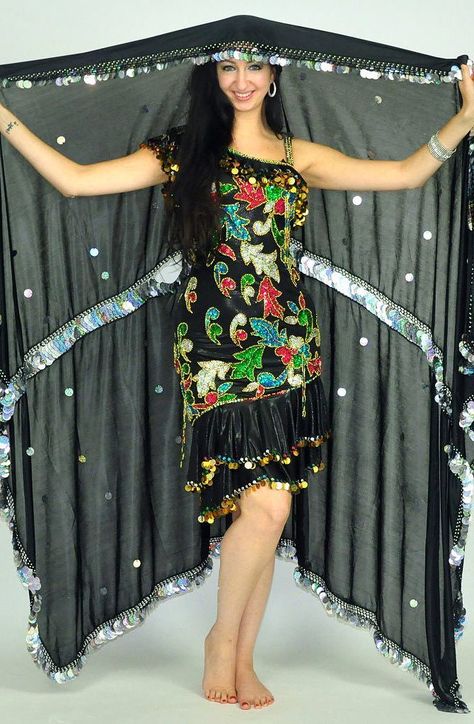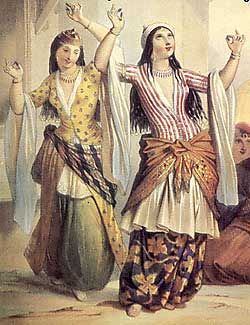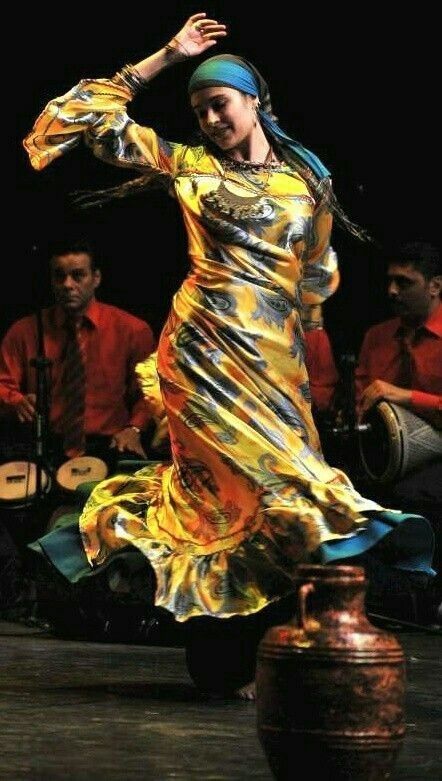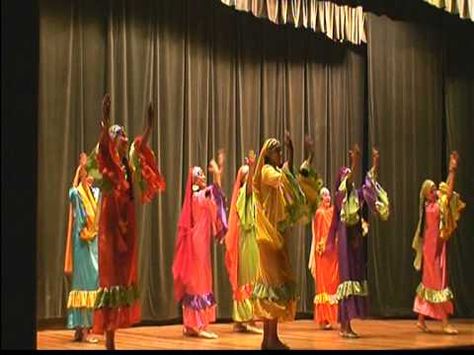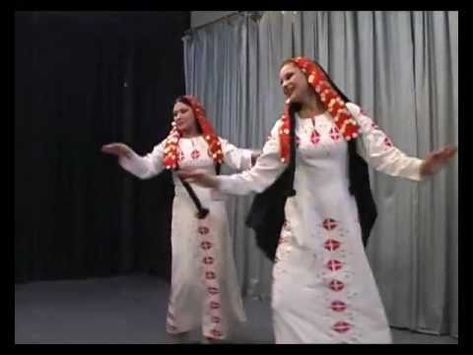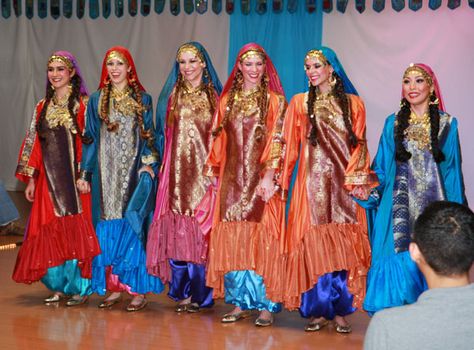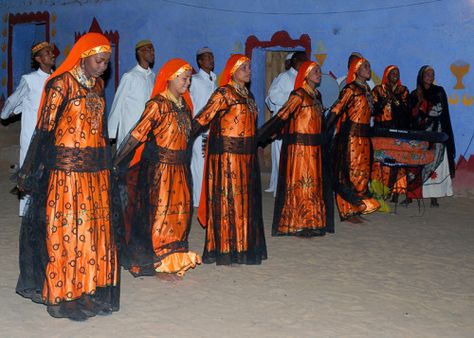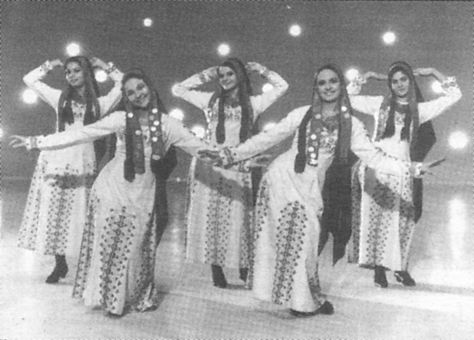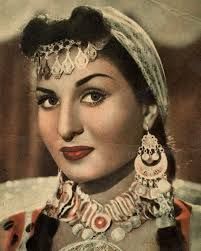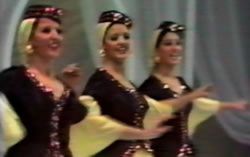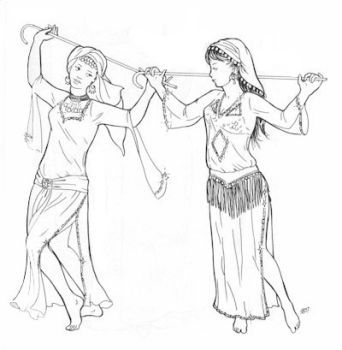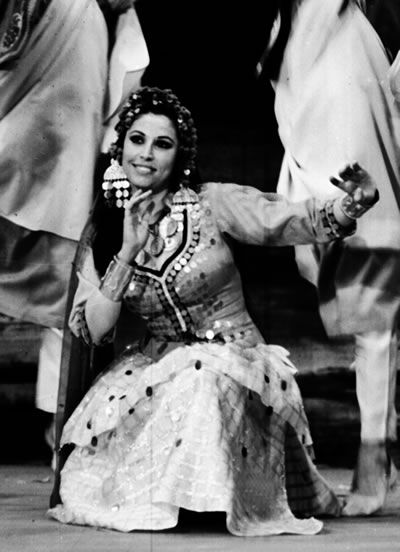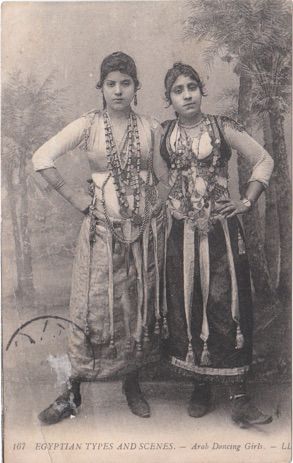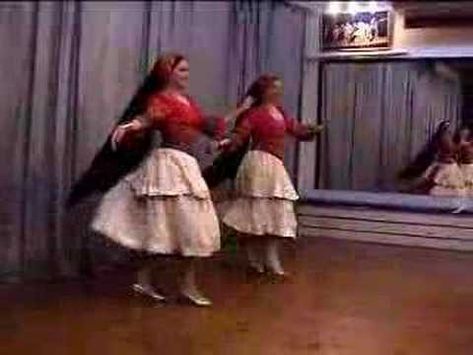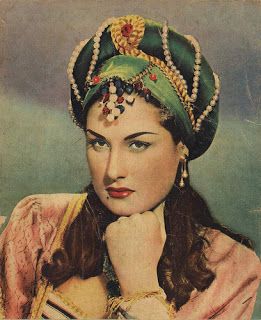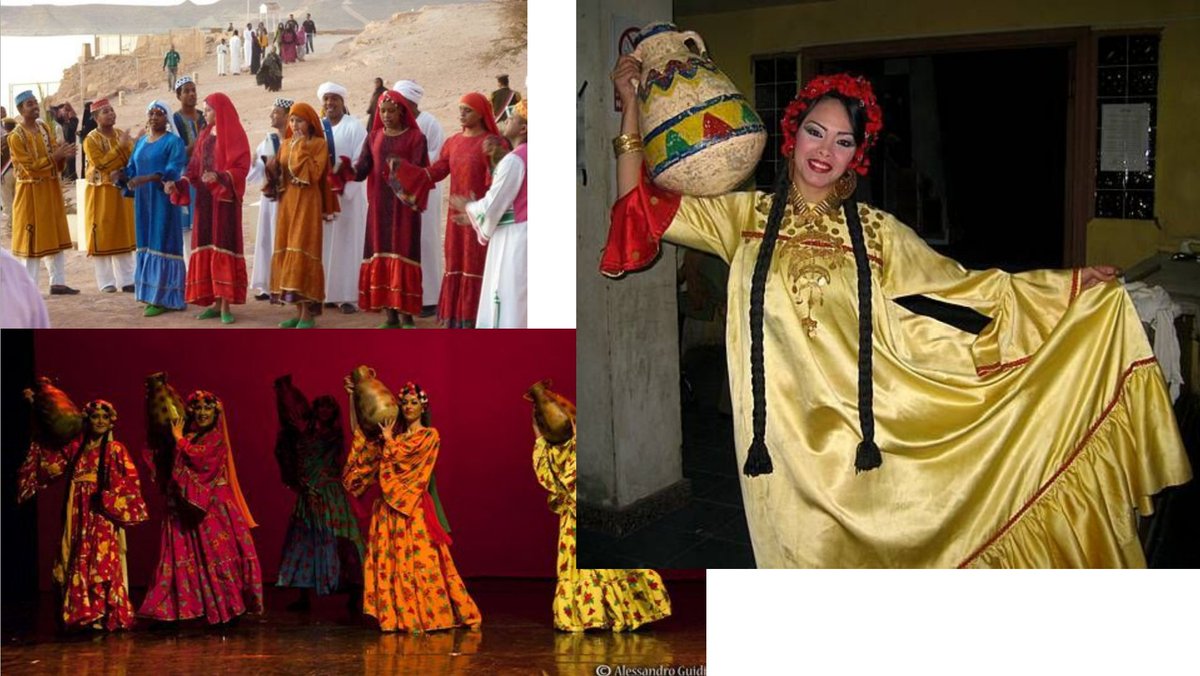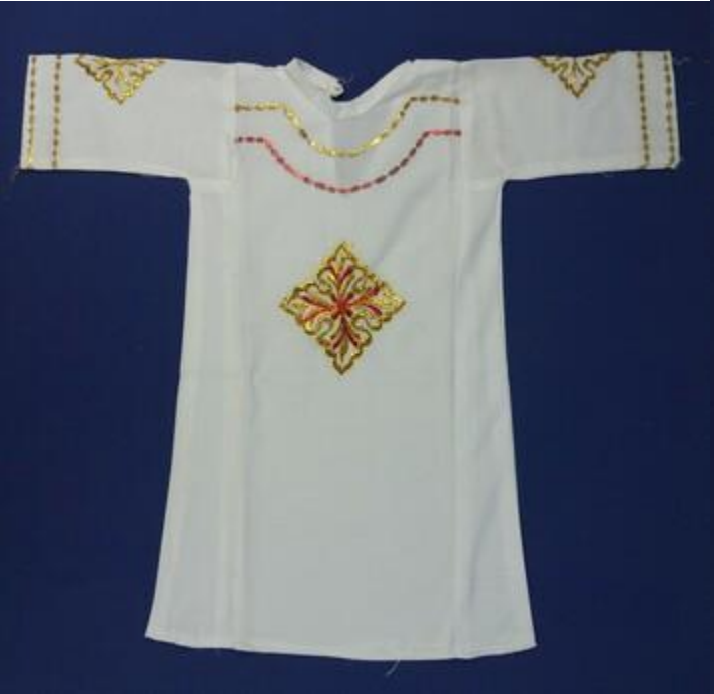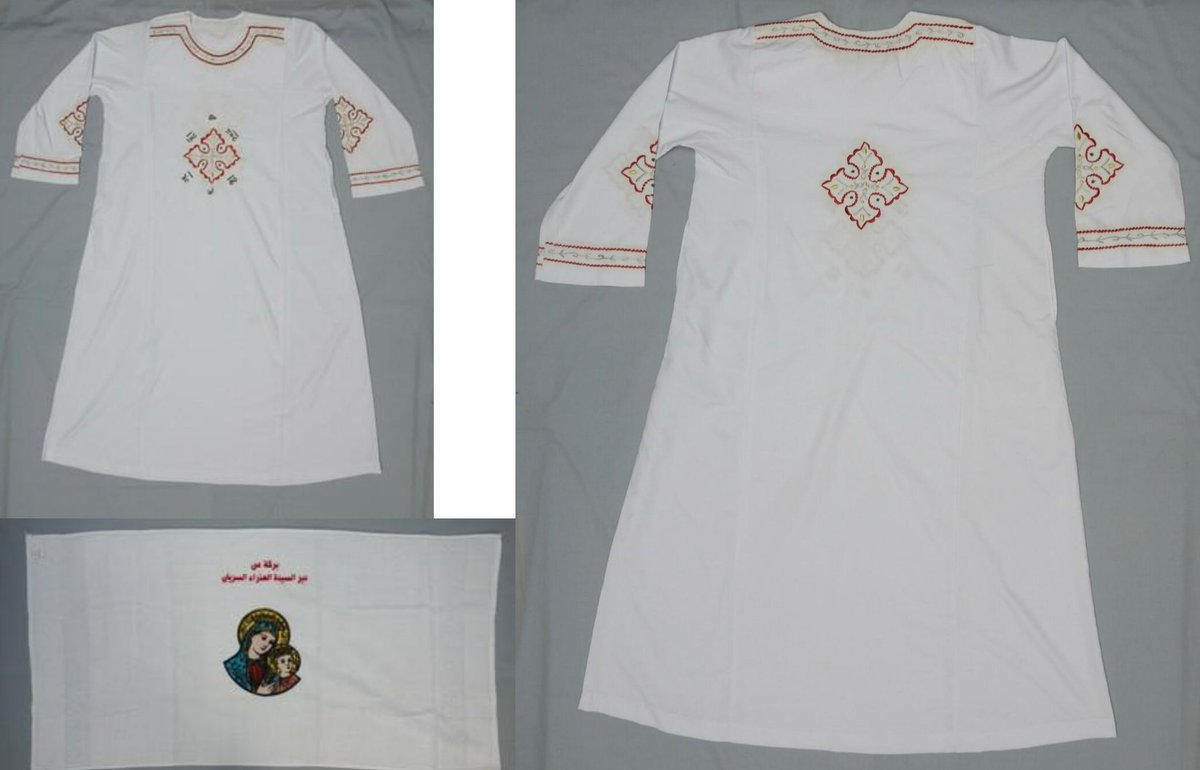okay, starting my thread on Egyptian traditional clothing- all the images are from mueseums, online market listings, some books, and other places. I& #39;ll also mention some books and papers that can be picked up for further reading.
I& #39;d argue that Assuit is one of the more well known cultural dresses due to the fact that 1920s enthusiasts frequently wear the fabric and sometimes the traditional dress due to the 20s Egypt craze. the pink one is a wedding dress.
These are from the Bahariya Oasis, and unfortunately I don& #39;t know much about these or their construction. They are always black, with pink or orange stripes. Some other colors show up as decoration as well.
These necklaces are sometimes called bogma and are also worn in Bahariya, though similar beaded necklaces have persisted throughout Egypt.
These are from Dahkla, and have a noticeable similarity to Bahariya& #39;s dress. Unfortunately I have even less information on these.
These are from Fayum, and I& #39;ll be coming back to them once I start the stuff I found in "the Fellahin of Upper Egypt" because the author did a lot of her work near there
These dresses are from Sinai and share some elements with Palestinian traditional dress, in particular, the cross stitch patterns. The colors used on the dress often tell you if a woman is married, unmarried, or widowed.
Siwa is another famous regional dress. This dress is heavily influenced by Amazigh tradition, as Siwa is the last place in Egypt that is still part of Amazigh lands.
The mother of pearl buttons are theorized to have been protective, and the sunburst has been connected to Ancient Egyptian art motifs.
These are less traditional dependin on how you define it- the yelek comes from the Ottoman Empire& #39;s influence, though the similar caftan is called an entari. Some caftans in this style have been made as late as the 1940s.
This is a men& #39;s ensemble from the 1930s.
This is a men& #39;s uniform, 1940s. As you can see, striping and silk were popular for men& #39;s clothes in this time period.
These are some sketches of Sharqia& #39;s dress, which has distinctions for the married and unmarried
These are more examples of dress from regions I& #39;ve cover earlier
This is a layout sketch that shows the construction of the Men& #39;s ensembles from earlier.
More men& #39;s clothes
This is a woman& #39;s ensemble from around the same time
These are dance costumes worn by various cultural groups in Egypt. Some of these are also western influenced.
Coptic clothing from after about the 600s isn& #39;t super well documented, and some photos suggest that Copts wore similar clothing to their Muslim neighbors. These are clothes meant for church, not daily life.
I think I& #39;ve mostly exhausted my photo archives so now we get to books and papers
As you can imagine, this wont be long
As you can imagine, this wont be long
https://www.faa-design.com/files/4/9/4-1-wafa.pdf">https://www.faa-design.com/files/4/9... - a paper going into combining ancient and more modern fashion into a collection of garments
Enchanted jewelry of Egypt: the traditional art and craft by Azza Fahmy- This mostly is jewelry, but it also goes into clothes for brief segments
Enchanted jewelry of Egypt: the traditional art and craft by Azza Fahmy- This mostly is jewelry, but it also goes into clothes for brief segments
Siwa; Jewelry, Costume, and Life in an Egyptian Oasis by Margret Vale- this one focuses specifically on Siwa and the author has connections to The American University in Cairo
https://trc-leiden.nl/trc-digital-exhibition/index.php/from-kaftan-to-kippa/item/55-04-the-bedouin%20
https://trc-leiden.nl/trc-digit... href=" #sebleh">https://www.raqs.co.nz/me/clothing_glossary.html #sebleh
These">https://www.raqs.co.nz/me/clothi... are webpages that go into Egyptian clothing, with the first being from a museum
Though I mentioned "The Fellahin of Upper Egypt", it isn& #39;t especially useful in this area outside of the photos included
These">https://www.raqs.co.nz/me/clothi... are webpages that go into Egyptian clothing, with the first being from a museum
Though I mentioned "The Fellahin of Upper Egypt", it isn& #39;t especially useful in this area outside of the photos included
the screenshots of the women in the yellow room are from a preview video for a seminar that Shahira Mehrez did, which can be found here. The full video is available for $20. http://www.ketisharif.com/infoShahira.html">https://www.ketisharif.com/infoShahi...
the Encyclopedia of Embroidery from the Arab World by Gillian Vogelsang-Eastwood is also potentially useful.
Oriental Costumes, their designs and colors is a book from the 20s that has drawings of the construction of some garments
And that is everything I can think of right now.
Oriental Costumes, their designs and colors is a book from the 20s that has drawings of the construction of some garments
And that is everything I can think of right now.
There are designers trying to combat the cultural erosion that comes from these styles of dress being seen as inferior, such as myself, and other helping us, such as the aforementioned Shahira Mehrez. We need help though, which is why I want to one day start an internet
archive of traditional clothes and jewelry, where people can submit photos of clothes their family has with any information they know
But I don& #39;t have money or resources for that right now it& #39;s just an idea
But I don& #39;t have money or resources for that right now it& #39;s just an idea
I& #39;m going to try to read up more on Nubian clothing this month and add it to this thread
For starters: https://twitter.com/nubiaambassador/status/1280566153086144521?s=21">https://twitter.com/nubiaamba...
For starters: https://twitter.com/nubiaambassador/status/1280566153086144521?s=21">https://twitter.com/nubiaamba...

 Read on Twitter
Read on Twitter
